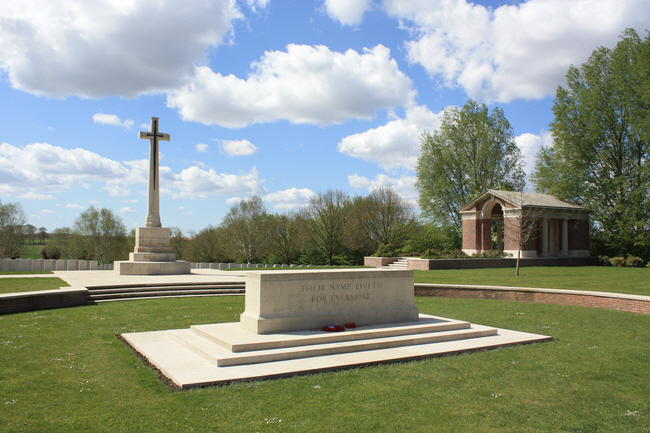
We enjoyed an organised tour of First World War battlefield sites. We were not able to survey every grave due to time constaints but present viewers with a small selection of the more interesting graves.
28th April 2015
Hooge Crater Cemetery

Hooge Crater Cemetery is a Commonwealth War Graves Commission burial ground for the dead of the First World War located in the Ypres Salient in Belgium on the Western Front. The cemetery was designed by Sir Edwin Lutyens.
The most notable grave in the cemetery
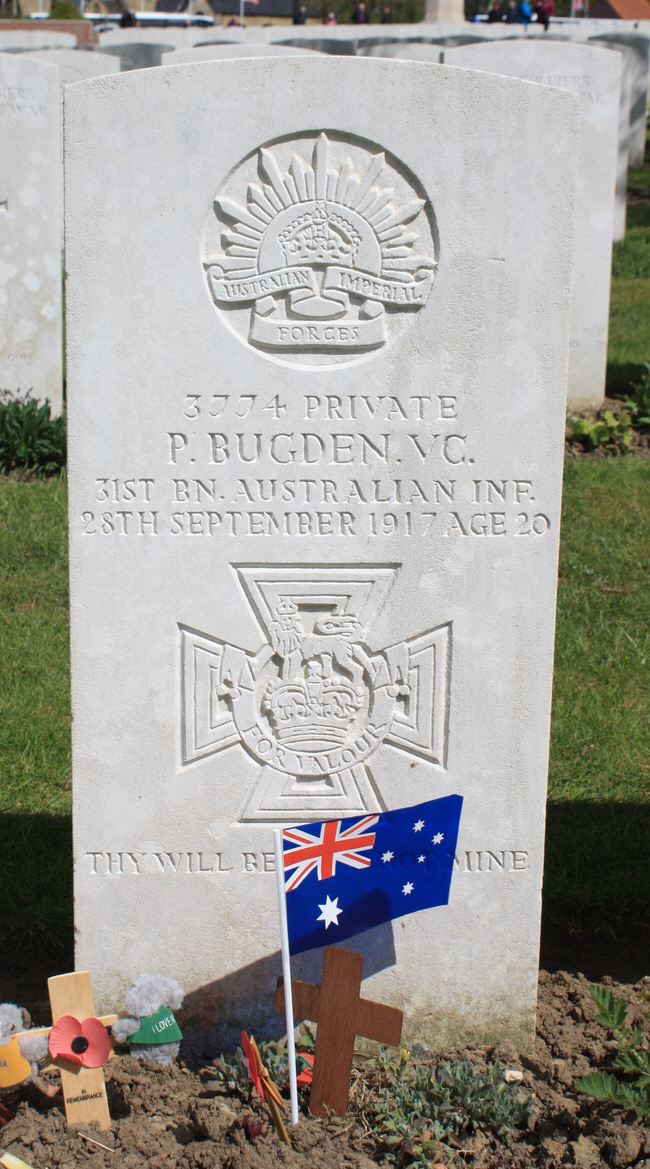
Patrick Joseph Bugden VC (17 March 1897 – 28 September 1917) was an Australian recipient of the Victoria Cross (VC), the highest award for gallantry in the face of the enemy that can be awarded to British and Commonwealth forces."For most conspicuous bravery and devotion to duty when, on two occasions, our advance was temporarily held up by strongly defended "pill boxes". Private Bugden, in the face of devastating fire from machine guns, gallantly led small parties to attack these strong points, and, successfully silencing the machine guns with bombs, captured the garrison at the point of the bayonet. On another occasion, when a Corporal, who had become detached from his company, had been captured and was being taken to the rear by the enemy, Private Bugden, single handed, rushed to the rescue of his comrade, shot one enemy, and bayonetted the remaining two, thus releasing the Corporal. On five occasions, he rescued wounded men under intense shell and machine gun fire, showing an utter contempt and disregard for danger. Always foremost in volunteering for any dangerous mission, it was during the execution of one of these missions that this gallant soldier was killed." The London Gazette, 23 November 1917
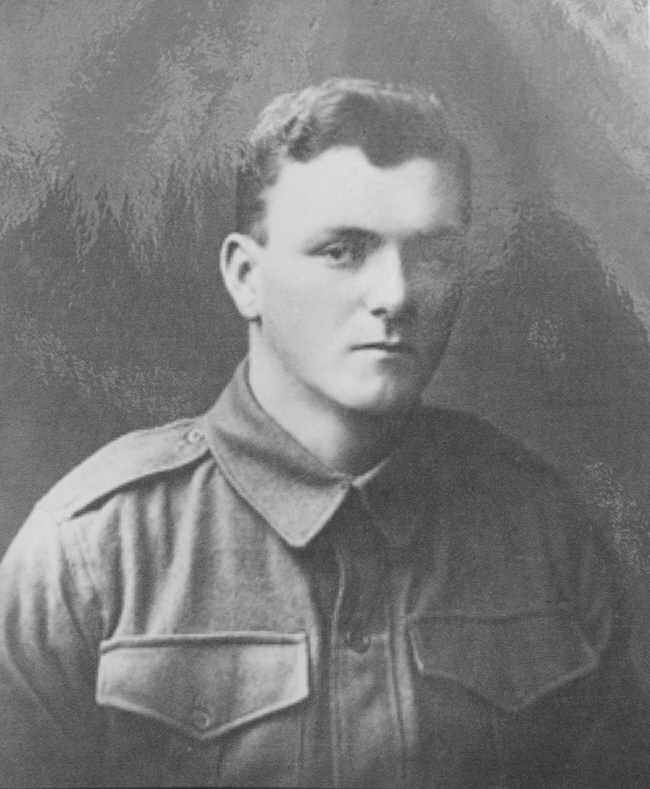
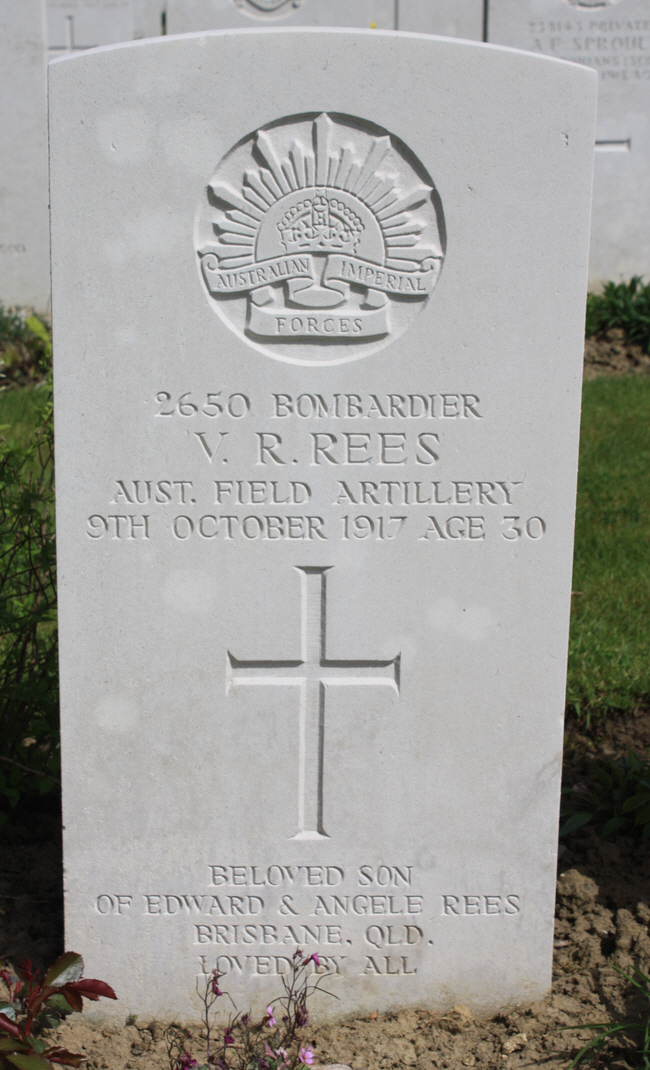
The Australian Government allowed additional text to be added by families to the standard design at no charge - sadly this policy wasn't followed by the British Government.
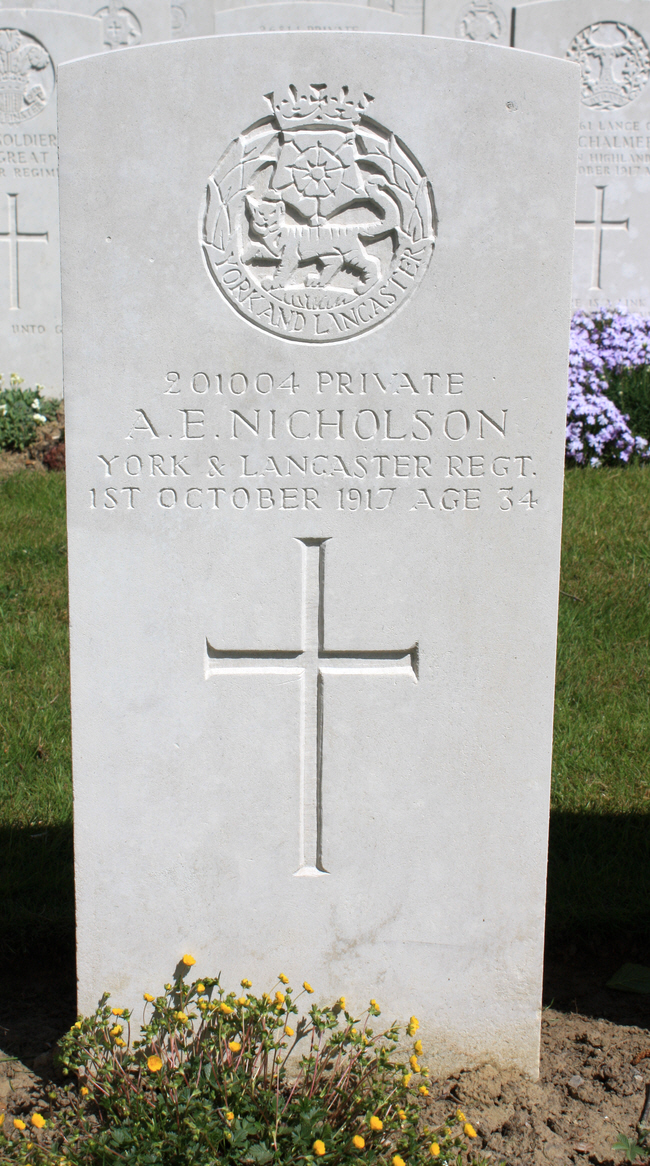
Two memorials to soldiers who shared my surname.
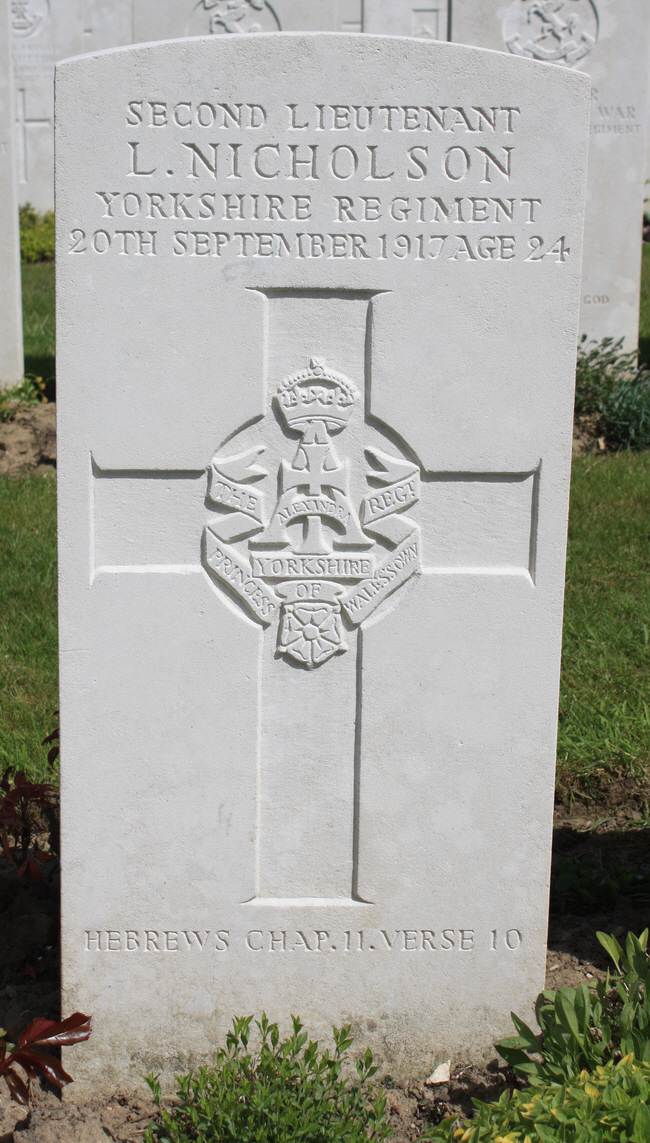
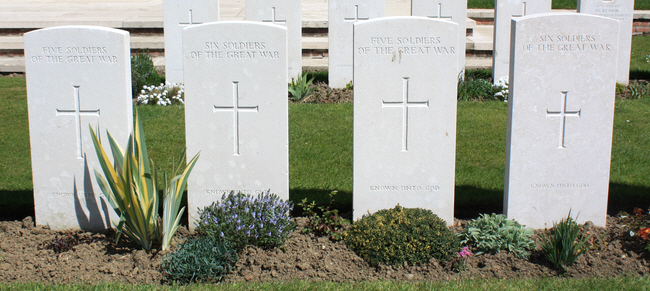
Four memorials each reporting the mass burial of unknown soldiers.
Langemark German Cemetery
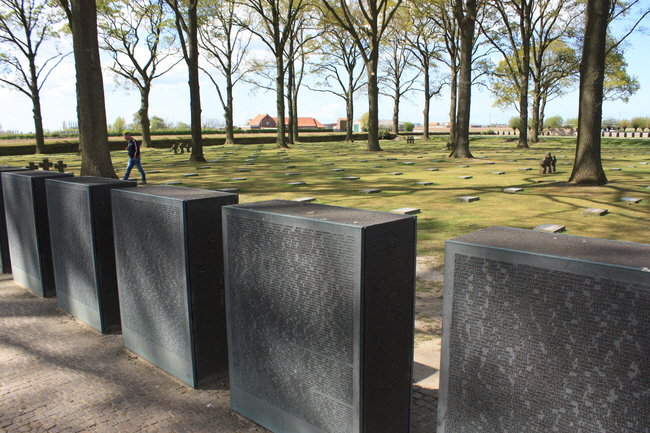
Langemark cemetery is one of only four First World War German cemeteries in the Flanders region. The oak is the national tree of Germany and these have grown very tall over the past 80 years and they contribute to the sombre atmosphere of this cemetery.
Both the vertical and the horizontal designs appear unsatisfactory - the vertical slabs are too crowded with text and the horizontal gravestones rather dirty.
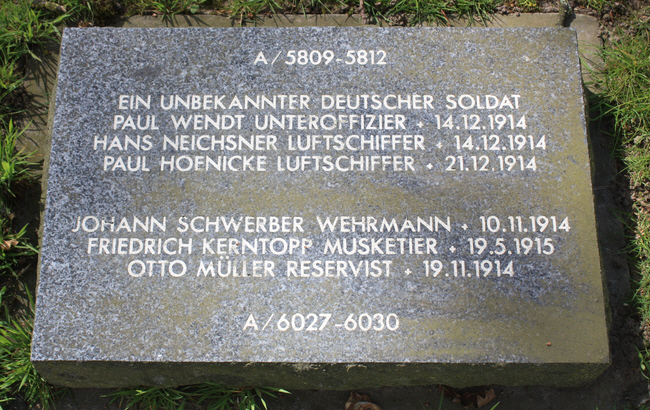
Menin Gate, Ypres
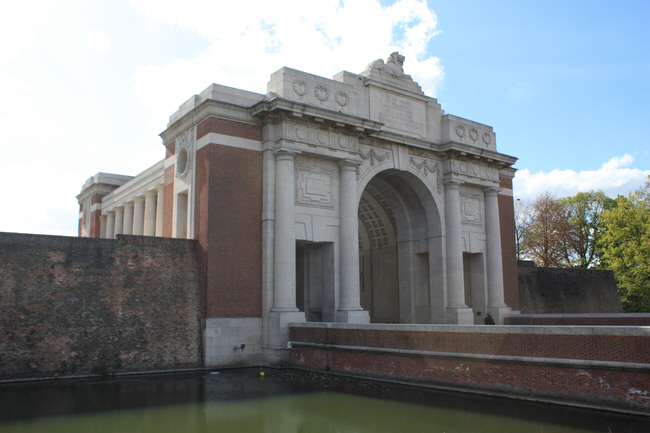
The Menin Gate Memorial to the Missing is one of four British and Commonwealth memorials to the missing in the battlefield area of the Ypres Salient in Belgian Flanders. The memorial bears the names of 54,389 officers and men from United Kingdom and Commonwealth Forces (except New Zealand and Newfoundland) who fell in the Ypres Salient before 16th August 1917 and who have no known grave. The names are engraved in Portland Stone panels fixed to the inner walls of the central Hall of Memory, to the sides of the staircases leading from the lower level to the upper exterior level, and on the walls inside the loggias on the north and south sides of the building.
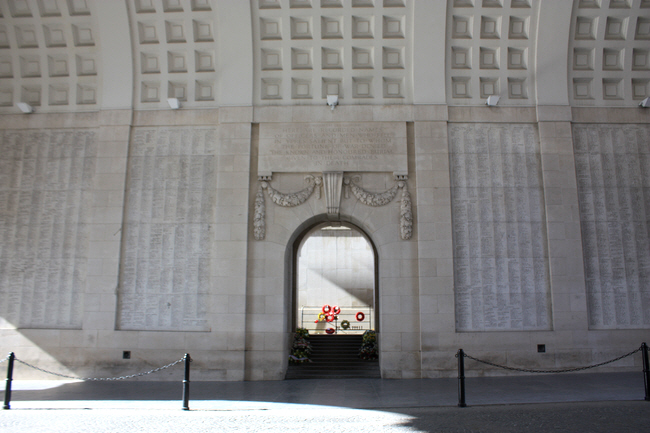
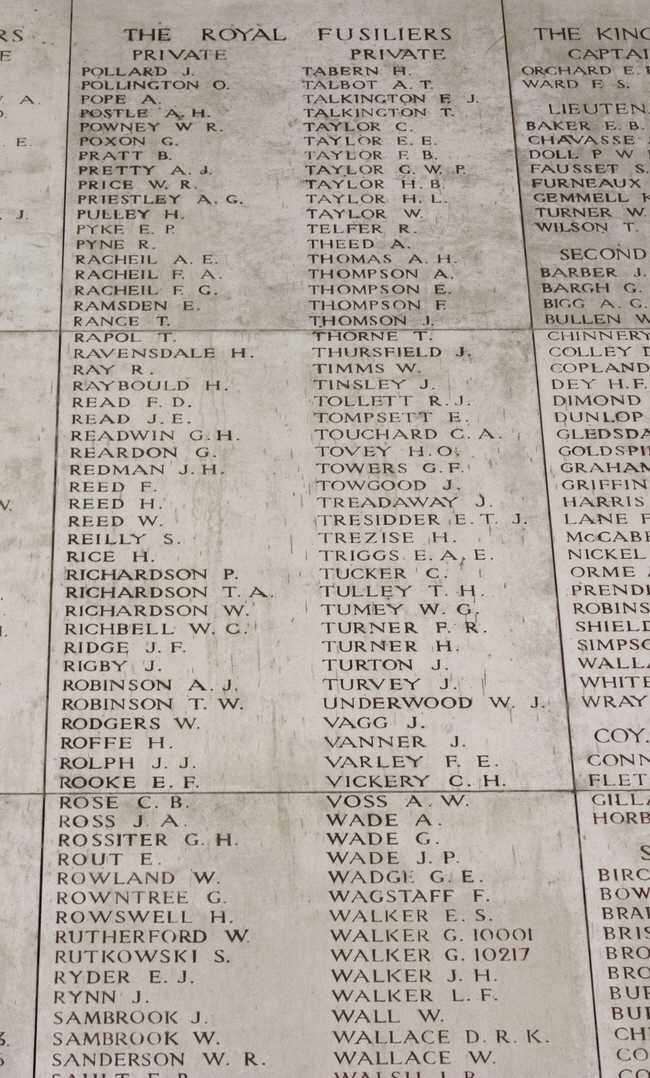
Harry Raybould SR/5452, Royal Fusiliers, died 22.2.1915 aged 29..
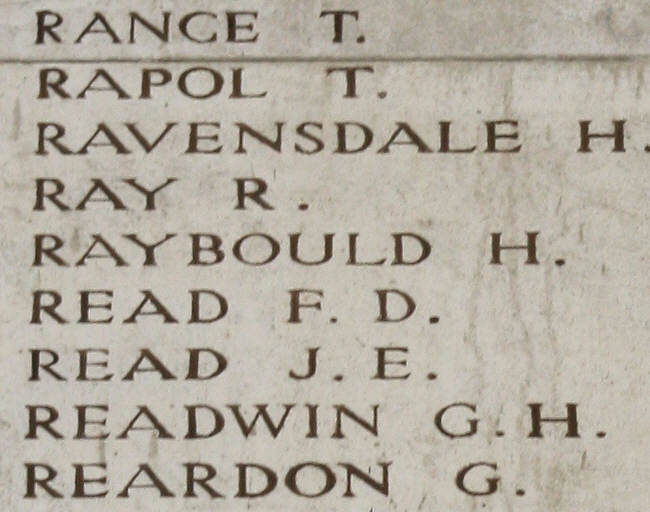
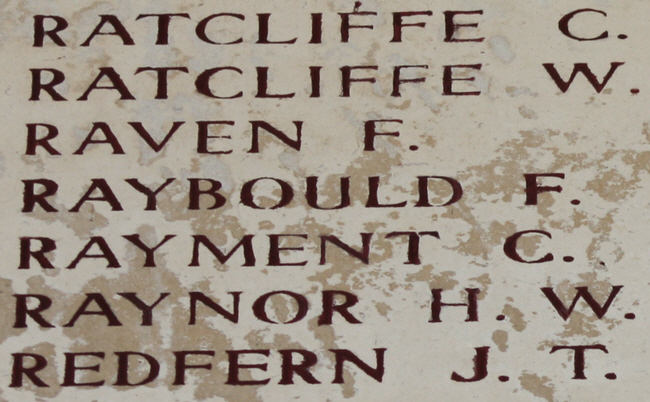
Fred Raybould 18489, Sherwood Foresters (Notts and Derby Regiment), died 31.07.1917 aged 29.
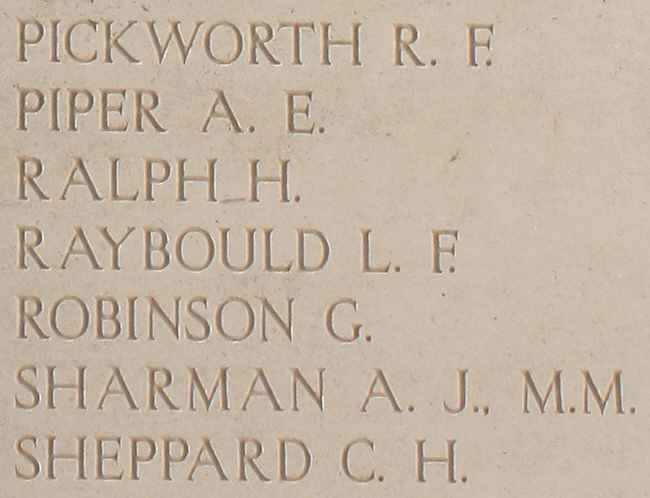
Leslie Francis Raybould 3620, Australian Infantry, A.I.F., died 23.09.1917
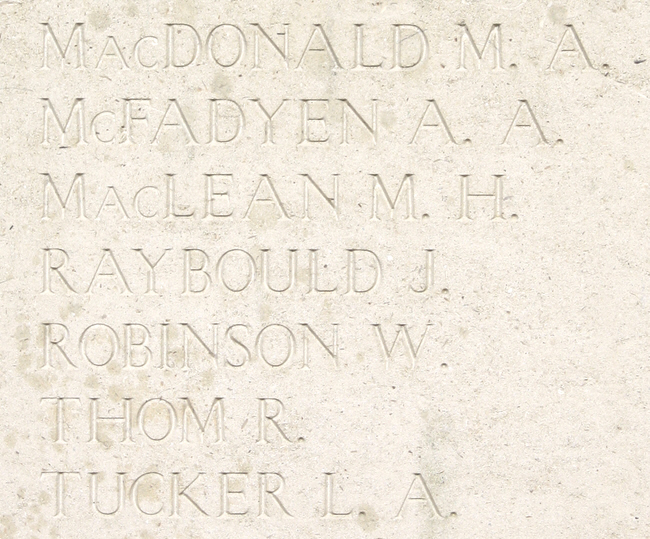
Joel Raybould 73507, Canadian Infantry, died 6.06.1916, aged 28.
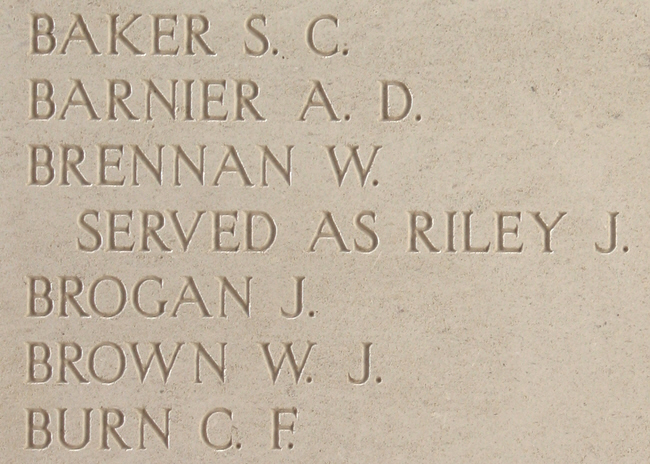
William Brennan served under the alias of J Riley.
Sanctuary Wood
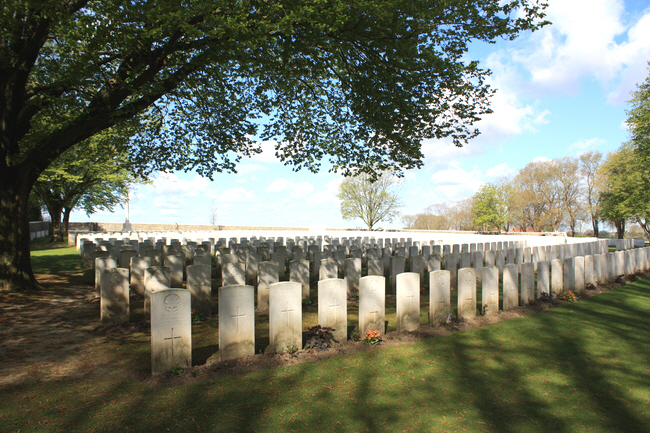
Sanctuary Wood Cemetery is a Commonwealth War Graves Commission (CWGC) cemetery for the dead of the First World War, 5 km east of Ypres.
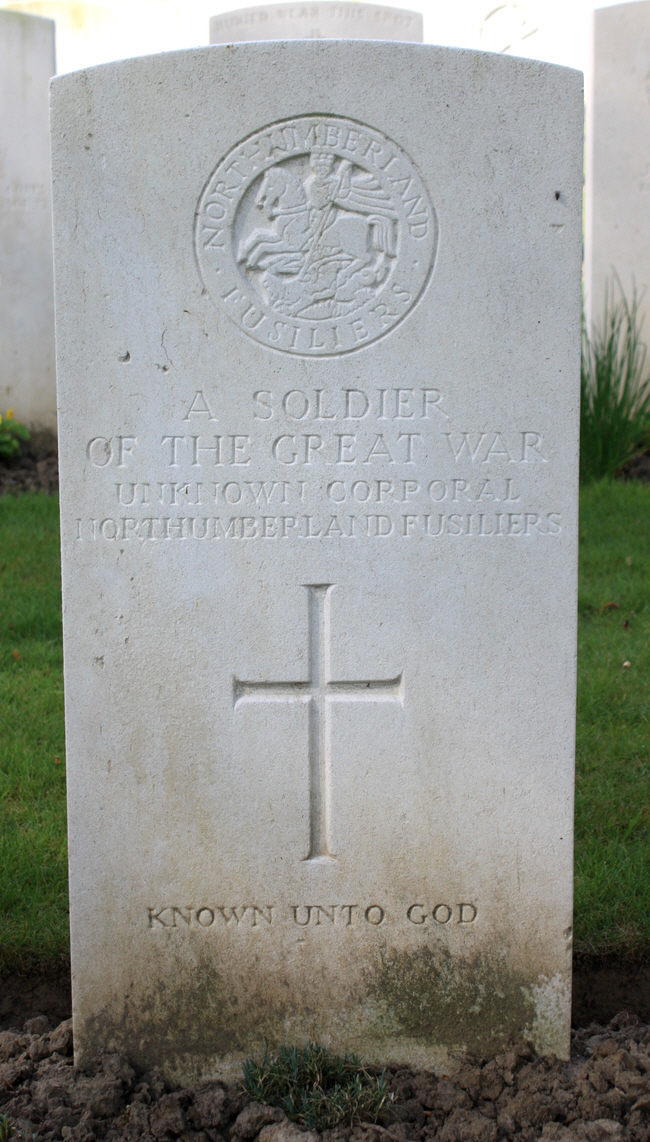
An unknown Corporal of the Northumberland Fusiliers.
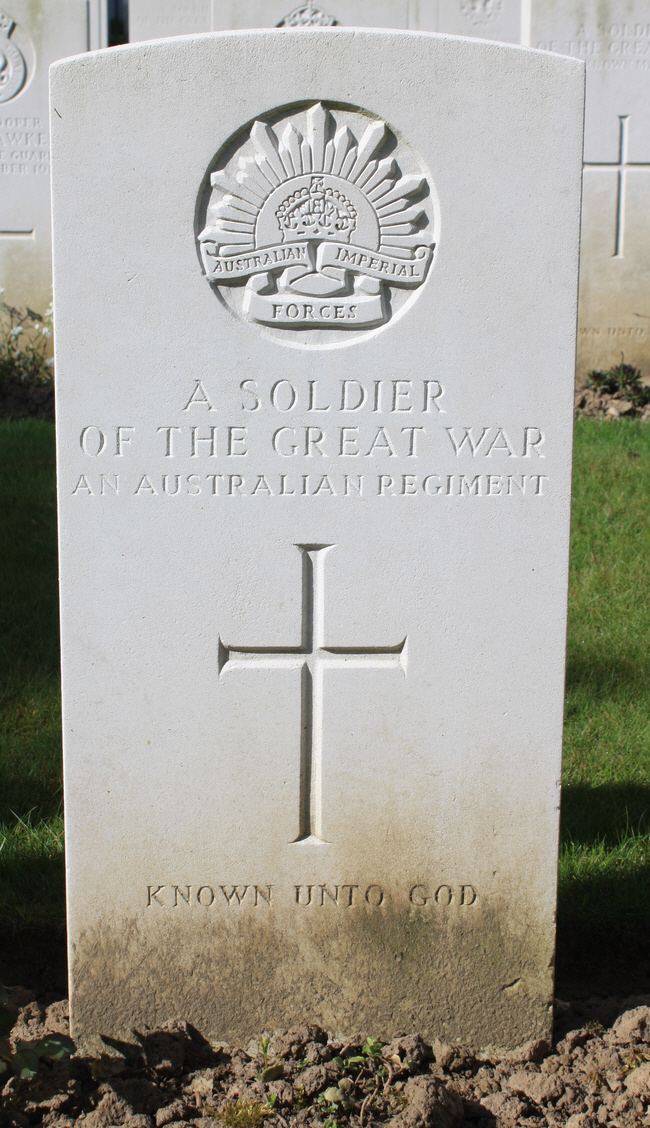
A unknown soldier from an Australian Regiment.
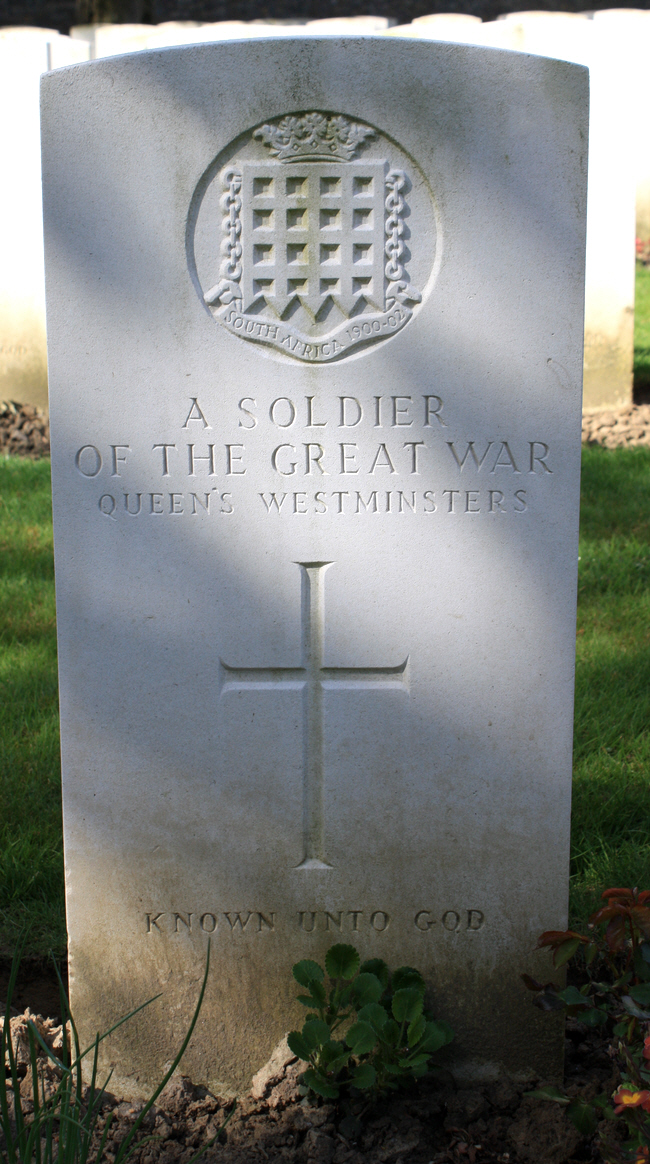
A unknown soldier from the Queen's Westminsters Regiment.
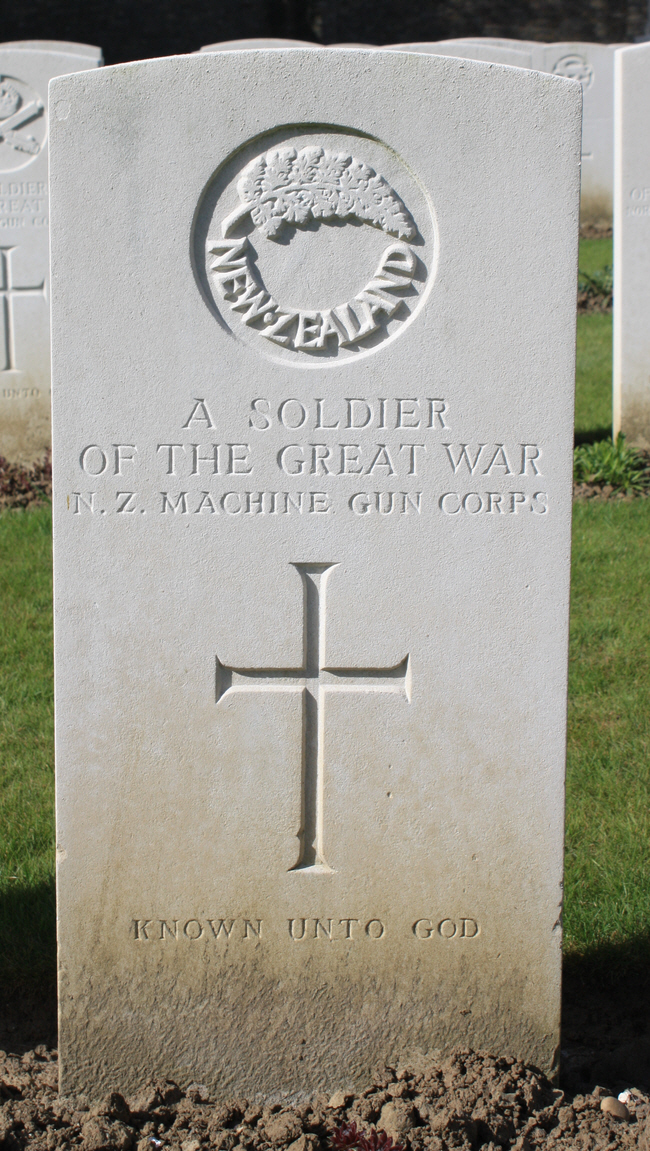
A unknown soldier from the New Zealand Machine Gun Corps.
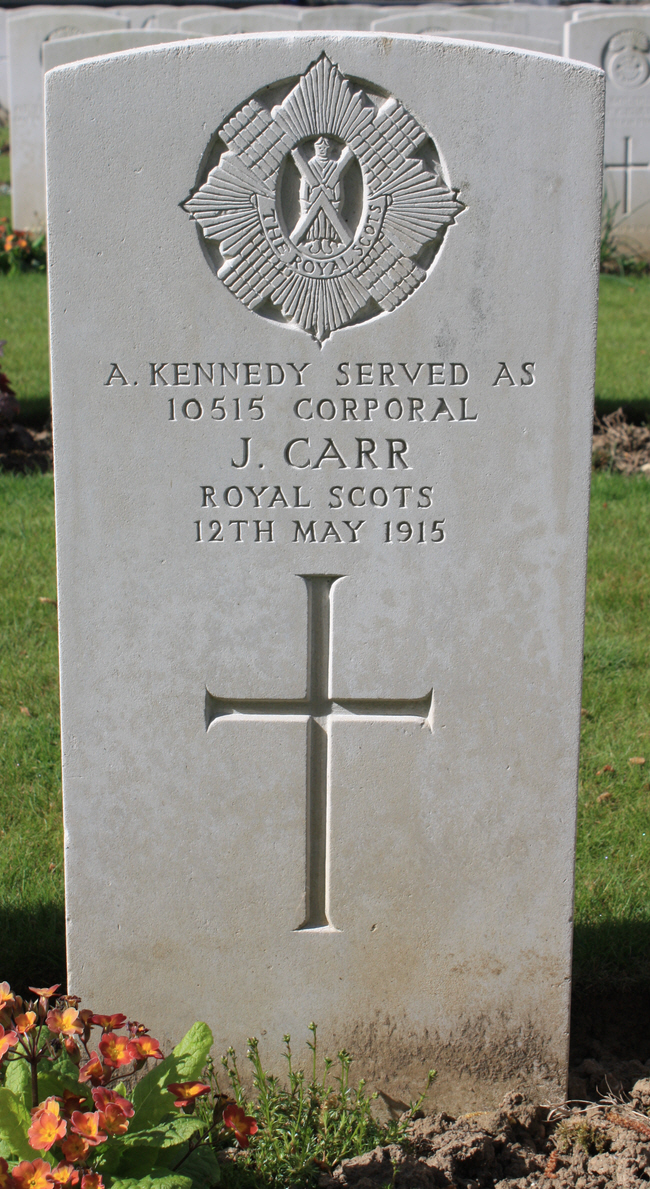
A Kennedy served under the name J Carr.
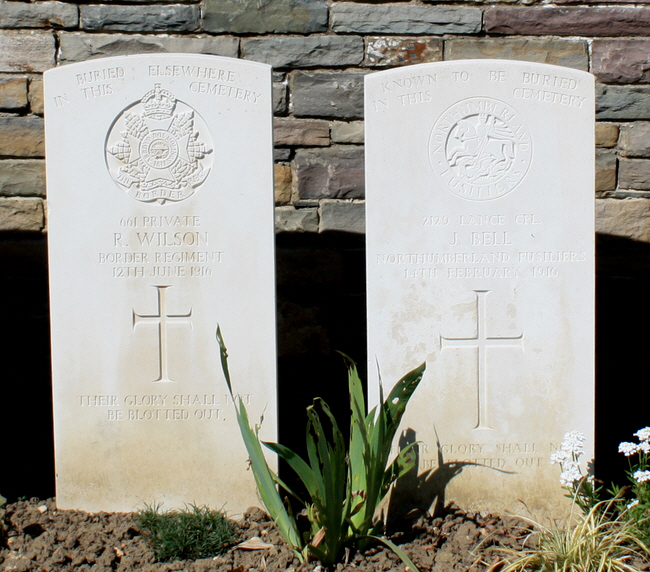
Two gravestones - one says "BURIED ELSEWHERE IN THIS CEMETERY" the other says "KNOWN TO BE BURIED IN THIS CEMETERY".
Tyne Cot
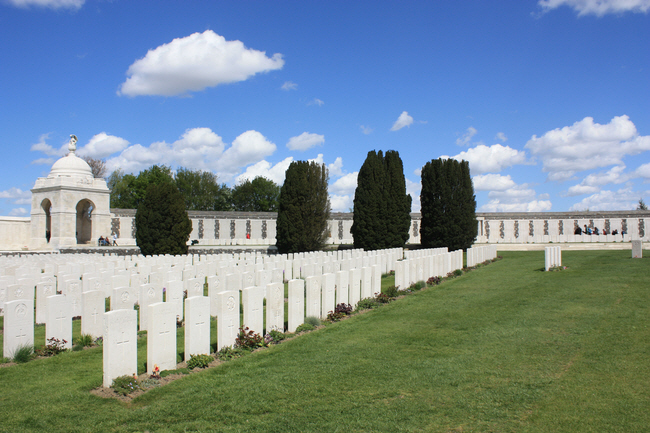
This is the largest British war cemetery in the world, Tyne Cot CWGC Cemetery was designed by Sir Herbert Baker. 11,908 graves are registered within Tyne Cot, making it a somewhat impersonal war cemetery: the sheer number of graves make it perhaps difficult to take in. Of this total 70% are unknown. On the wall at the back of the cemetery are the names of 34,927 soldiers who have no known grave and died from August 1917 to the end of the war - a continuation of the names inscribed on the Menin Gate.
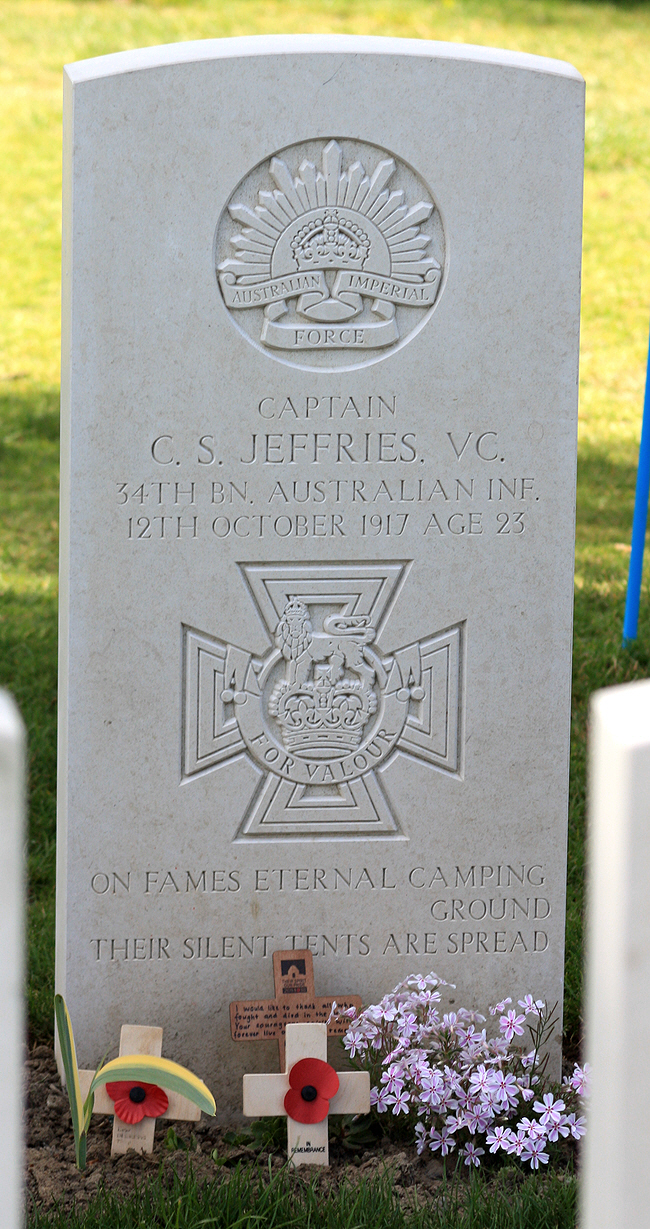
Clarence Smith Jeffries VC (26 October 1894 – 12 October 1917) was an Australian recipient of the Victoria Cross, the highest decoration for gallantry "in the face of the enemy" that can be awarded to members of the British and Commonwealth armed forces. He was posthumously decorated with the Victoria Cross following his actions in the First Battle of Passchendaele during the First World War, in which he led several parties of men in an attack that eventuated in the capture of six machine guns and sixty-five prisoners, before being killed himself by machine gun fire.
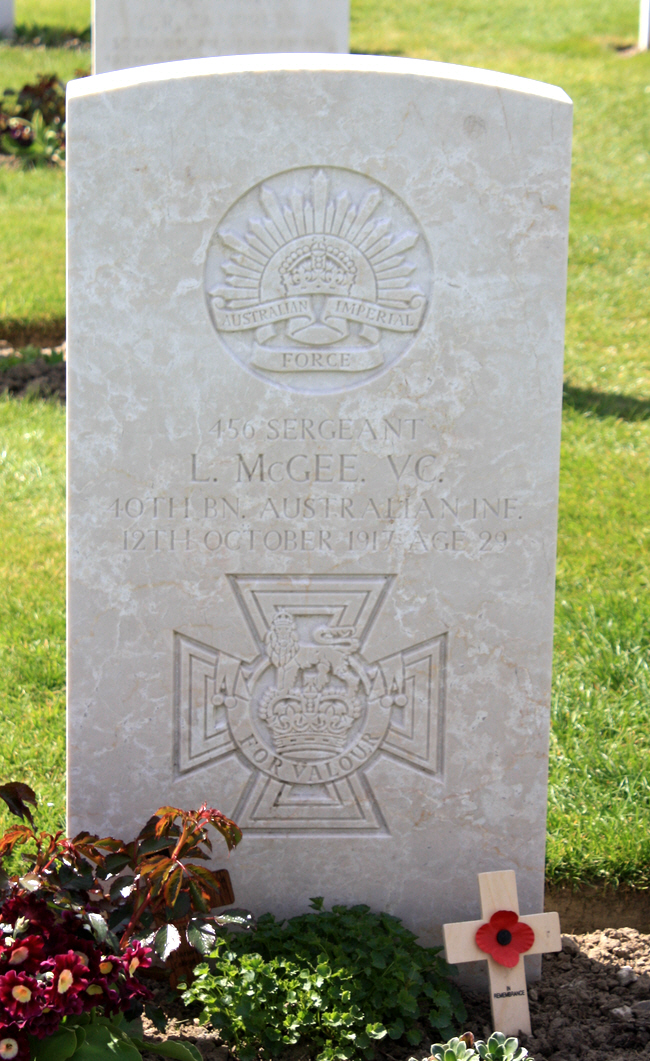
Lewis McGee VC (13 May 1888 – 12 October 1917) was an Australian recipient of the Victoria Cross, the highest decoration for gallantry "in the face of the enemy" that can be awarded to members of the British and Commonwealth armed forces. As a sergeant in the Australian Imperial Force, McGee was awarded the Victoria Cross for his actions in the Battle of Broodseinde—part of the Passchendaele offensive—on 4 October 1917. As his platoon came under heavy machine gun fire from a German pillbox, McGee rushed alone across open ground towards the emplacement. Armed solely with a revolver, he shot the gunners and captured the garrison. He then organised a bombing party, and led the group in the seizure of a second machine gun post.
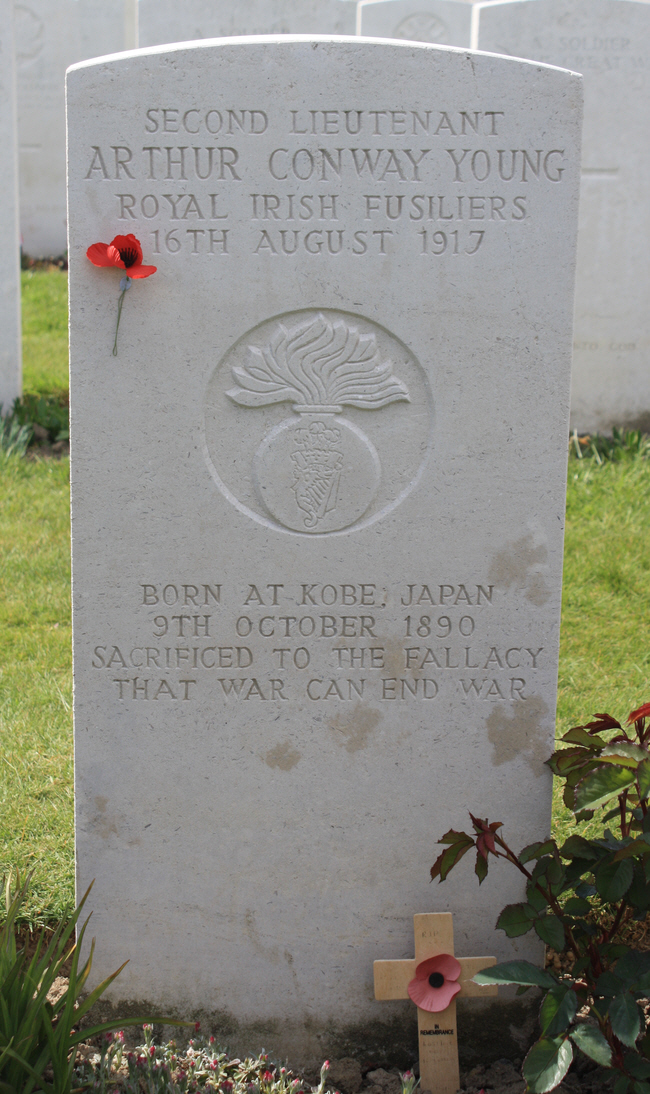
This is a very unusual epitaph to find on a military grave, criticising the concept of war!
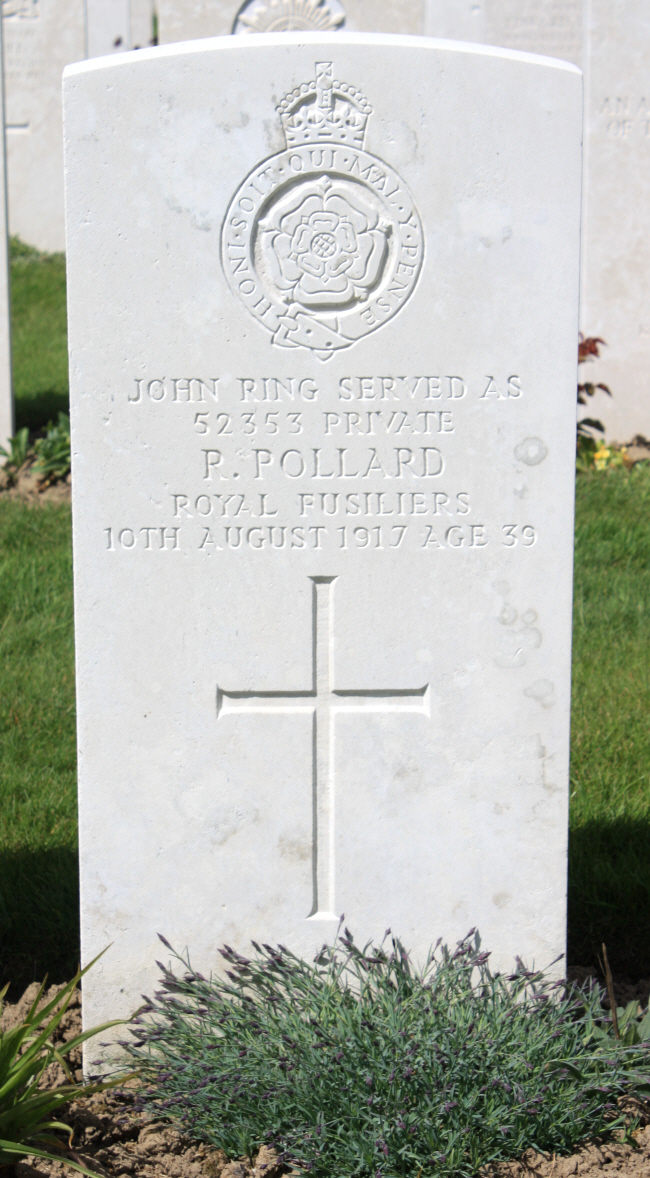
John Ring served under the name of R Pollard.
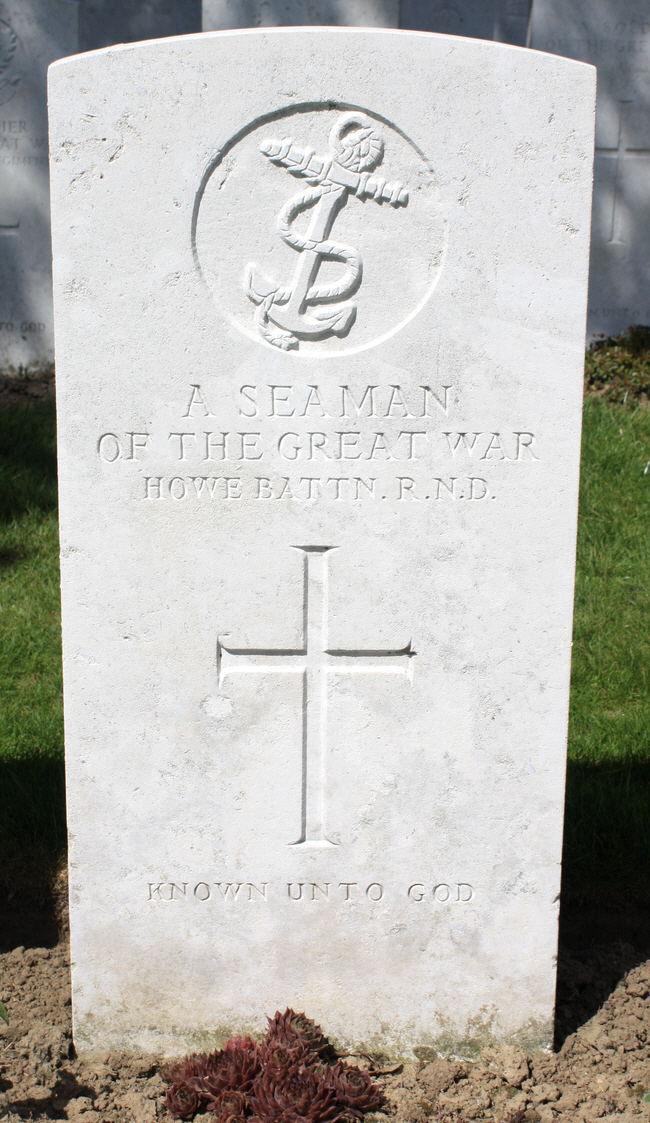
An unknown seaman of Howe Battalion, R.N.D.
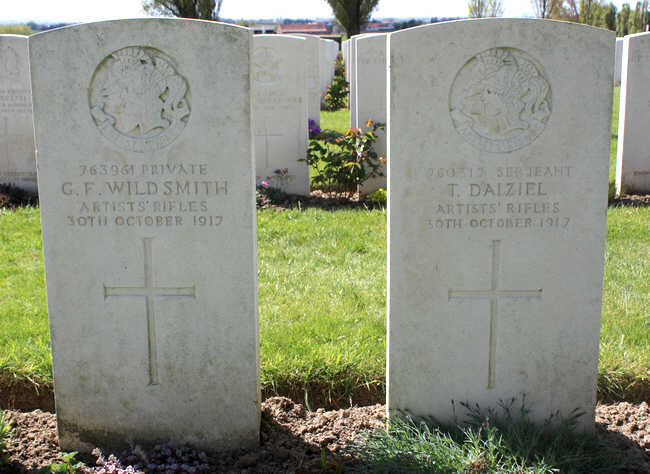
Two soldiers from the little-known Artists' Rifles.
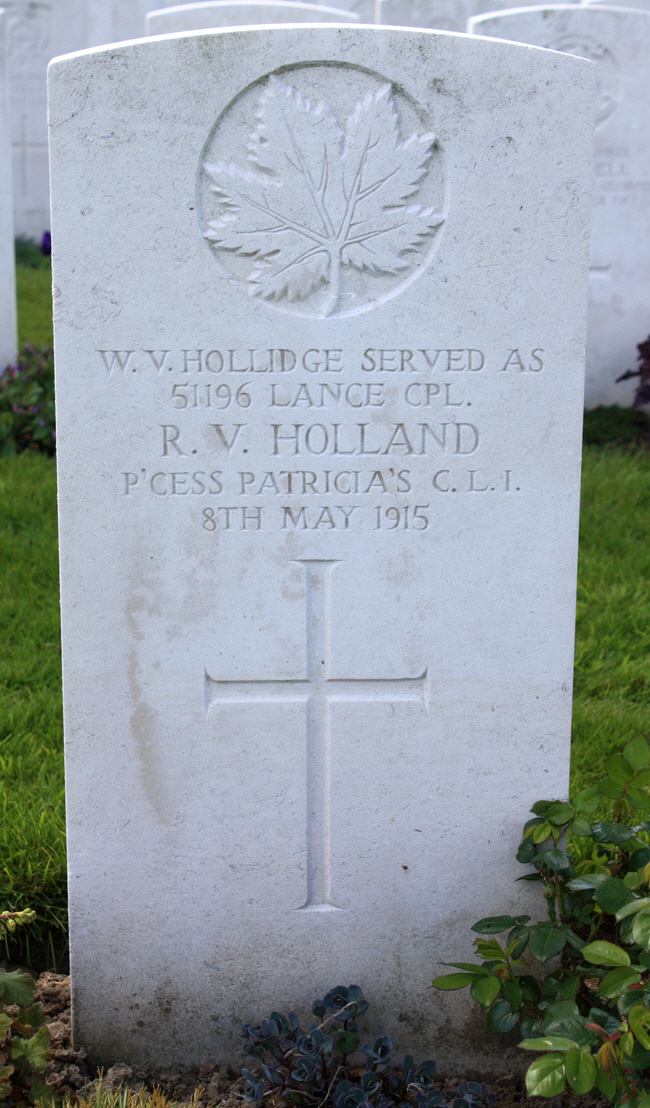
W V Hollidge served under the name of R V Holland.
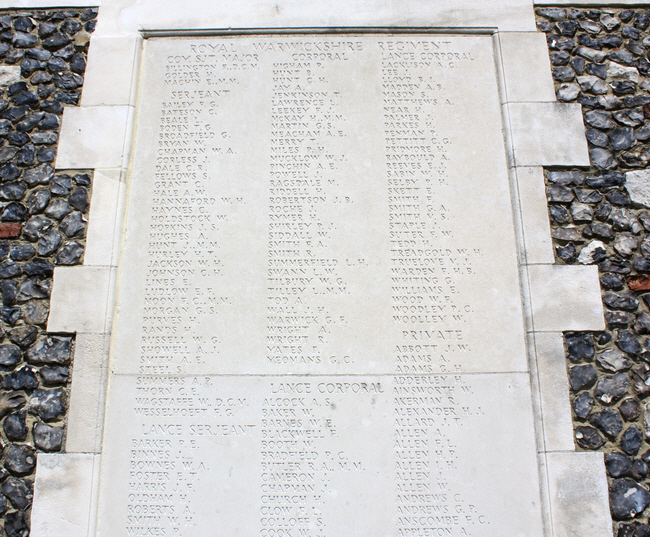
Arthur Raybould 770, Royal Warwickshire Regiment, died 9.10.1917.
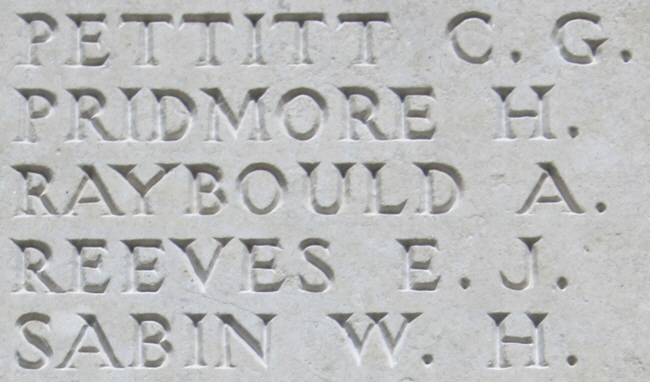
29th April 2015
Arras Memorial
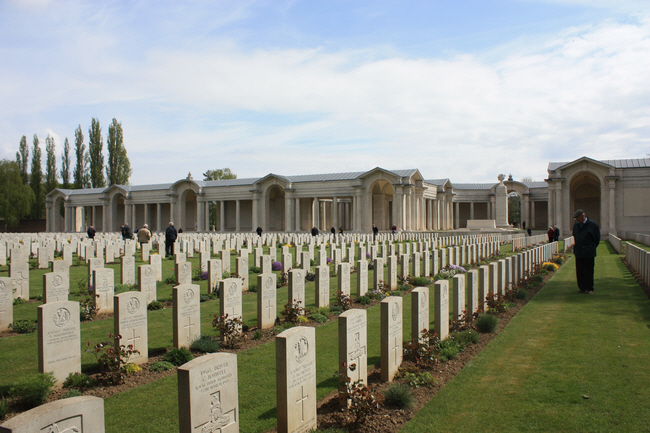
The Arras Memorial is a World War I memorial in France, located in the Faubourg d'Amiens British Cemetery, in the western part of the town of Arras. The memorial commemorates 34,785 soldiers of the forces of the United Kingdom, South Africa and New Zealand, with no known grave, who died in the Arras sector between the spring of 1916 and 7 August 1918. Designed by Sir Edwin Lutyens, the memorial includes sculpture by Sir William Reid Dick.
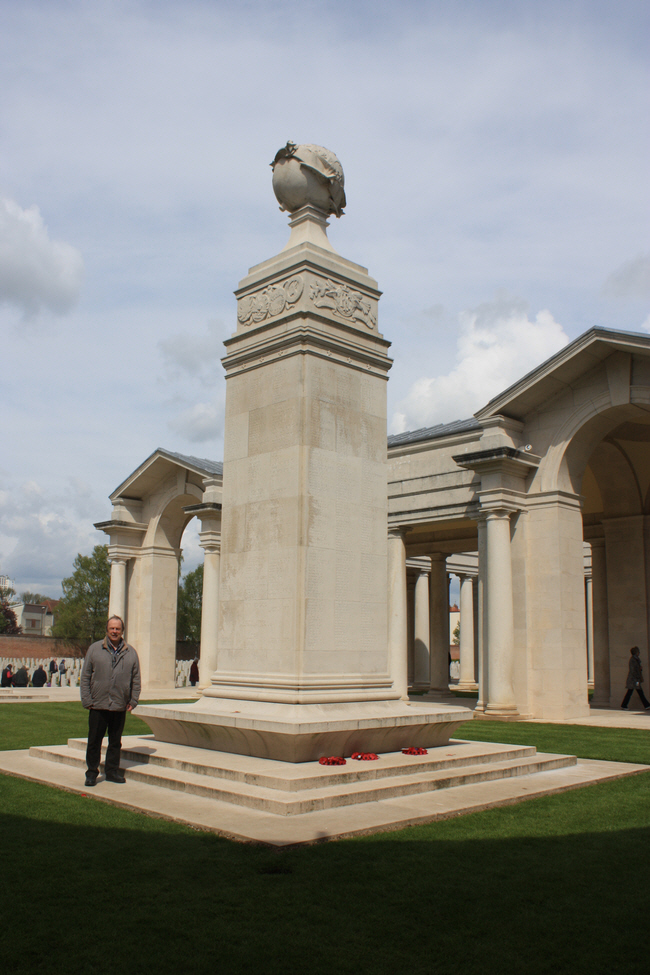
Located in the same cemetery is the Arras Flying Services Memorial (commemorating 991 airmen with no known grave).
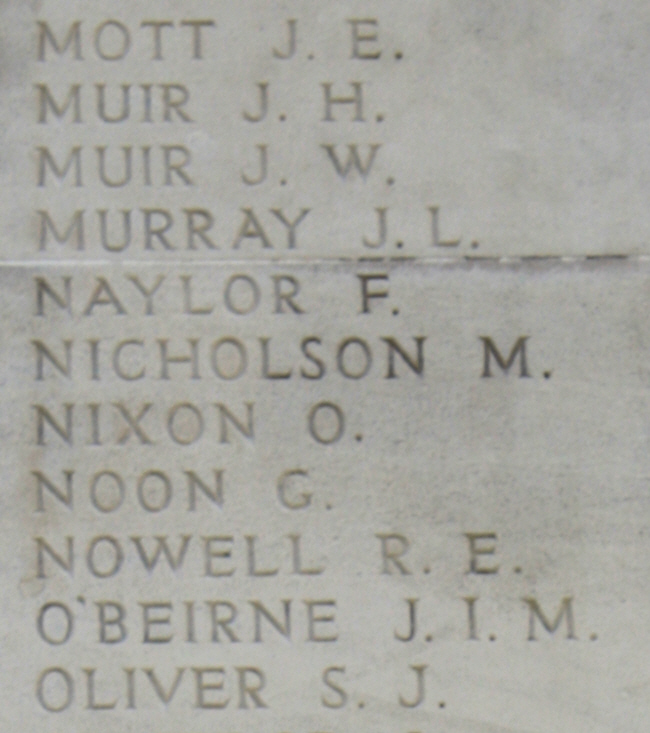
This airman shared my initial and my surname.
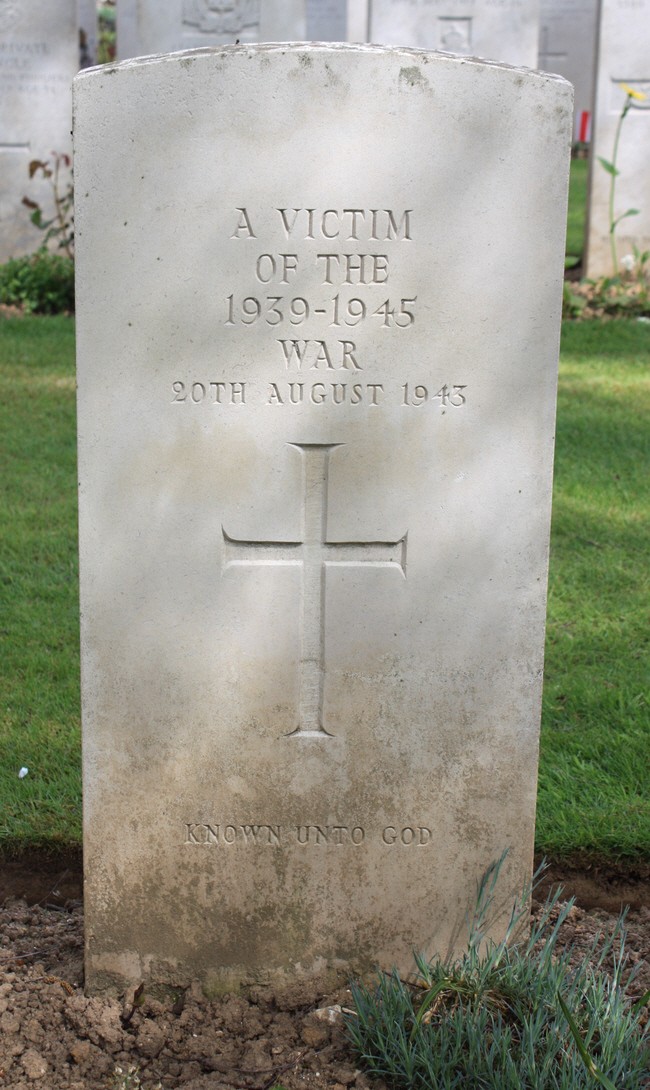
A victim of the 1939-1945 war.
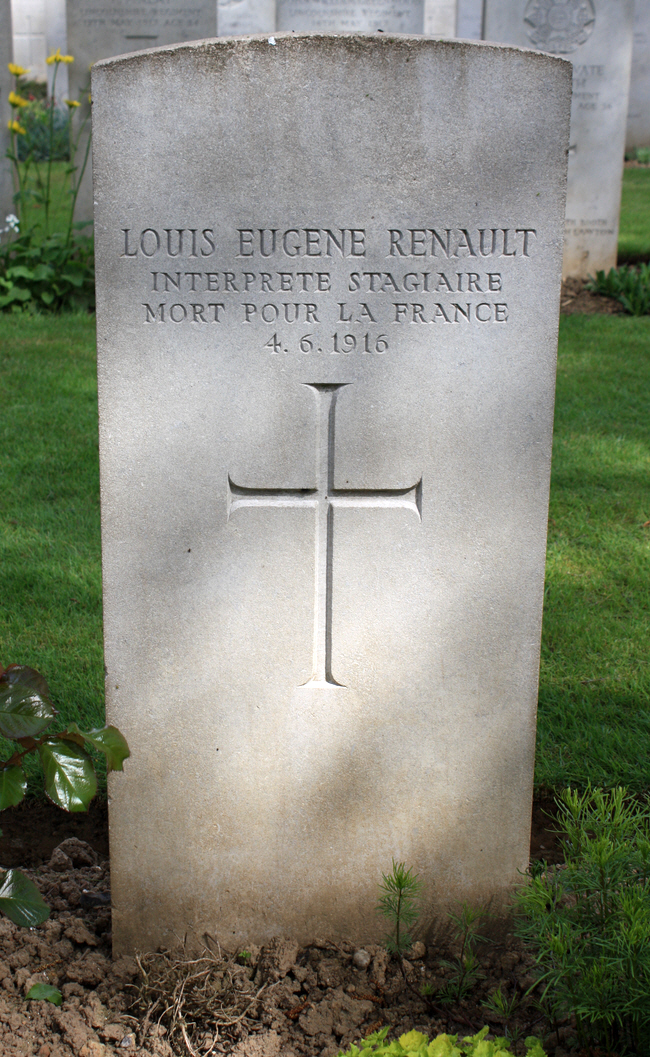
Something of a rarity - a French interpreter who, presumably, served the British Forces.
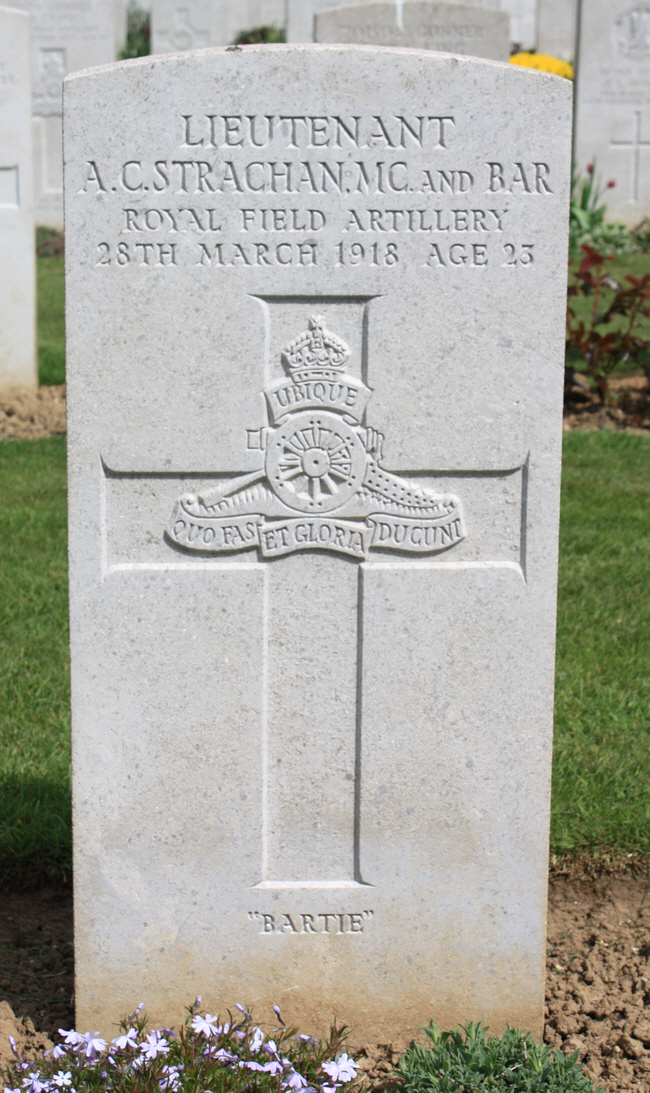
Lieutenant A C Strachan won the Military Cross with Bar.
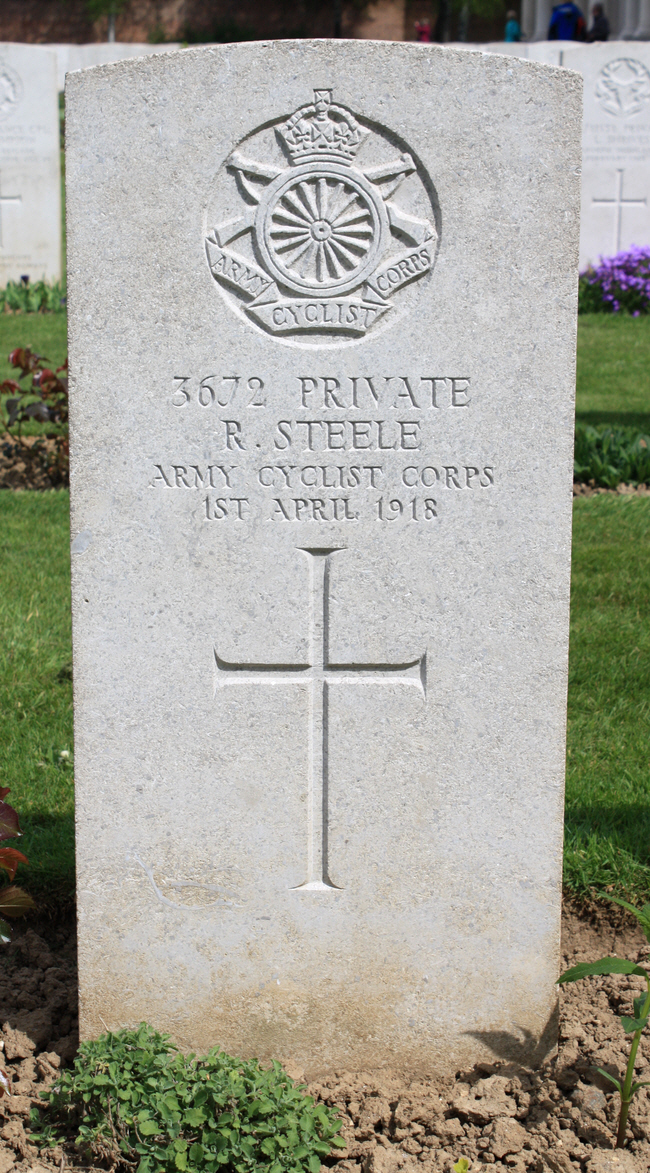
A soldier from the little-known Army Cyclist Corps.
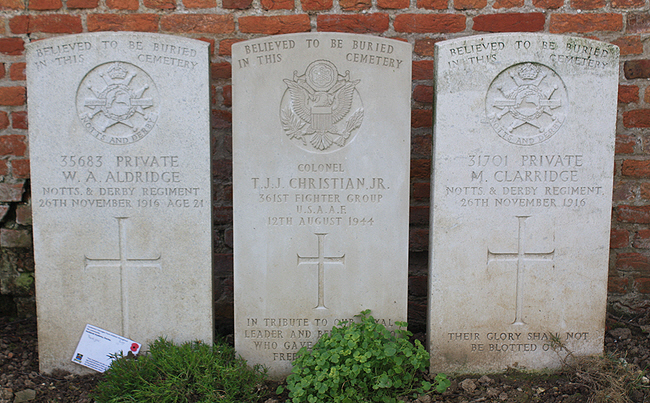
Three gravestones for soldiers who are all "BELIEVED TO BE BURIED IN THIS CEMETERY".
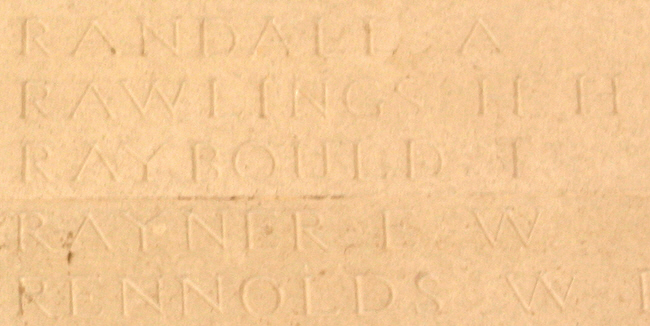
Thomas Raybould 21266, Worcestershire Regiment, died 23.04.1917 aged 24.
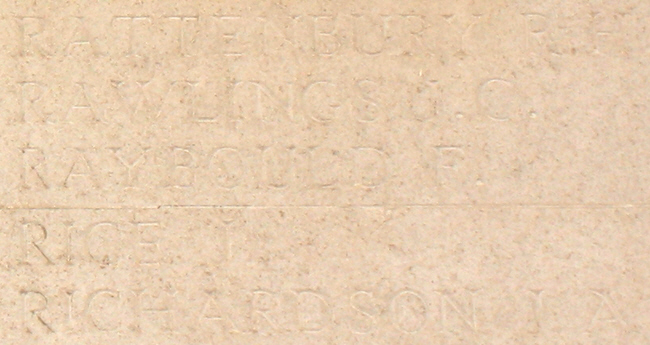
Frank Raybould 14365, Leicestershire Regiment, died 3.05.1917 aged 25.
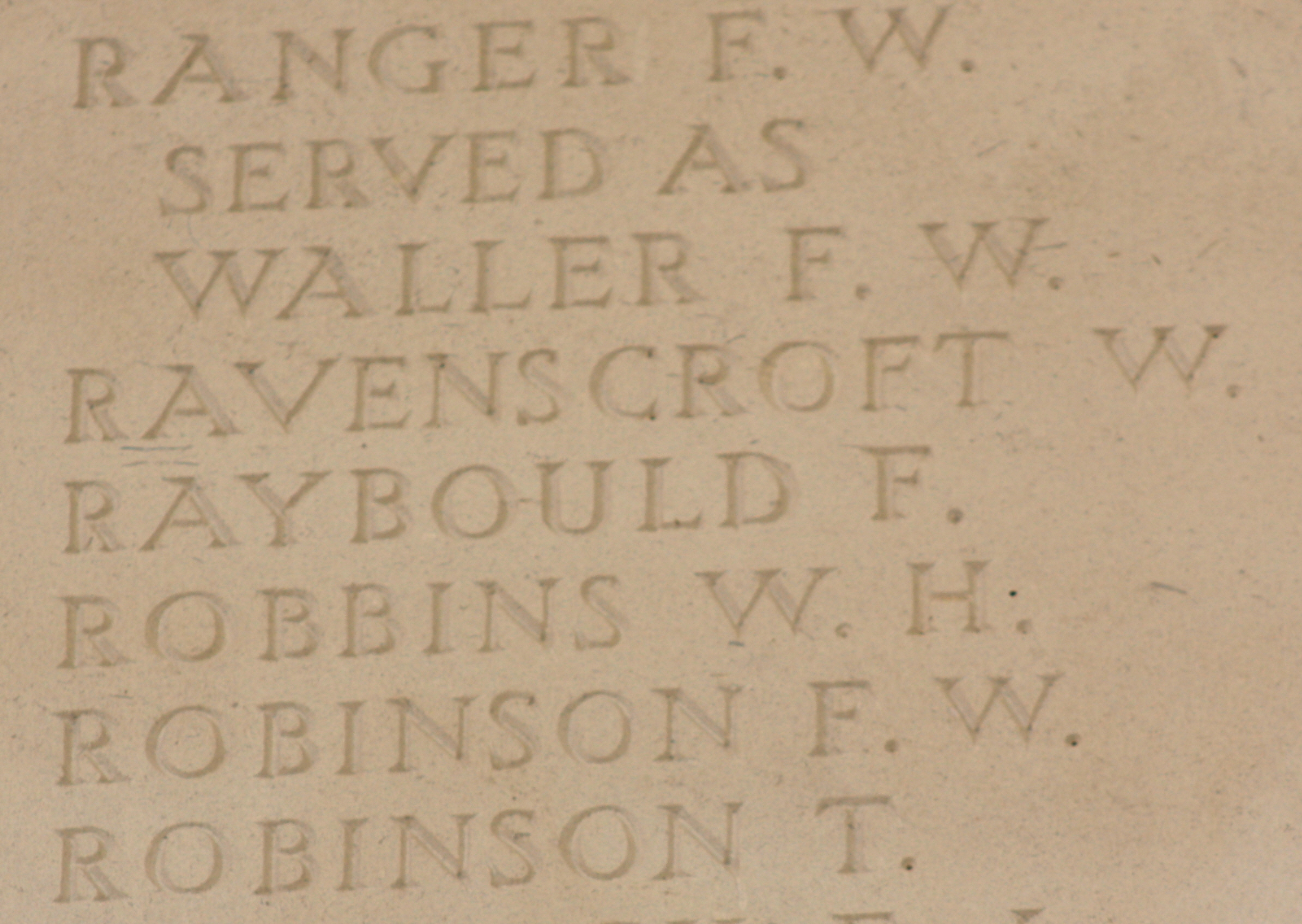
Frederick Raybould CH/18(S), Royal Marine Light Infantry, died 28.04.1917.
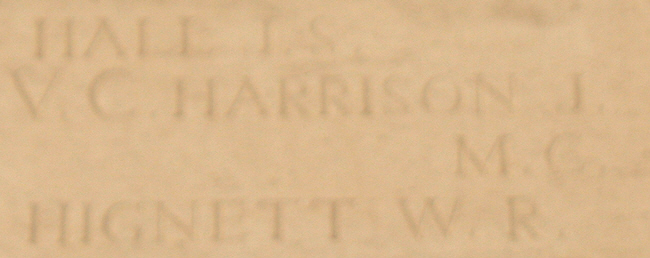
John "Jack" Harrison VC MC (12 November 1890 – 3 May 1917) was a professional rugby league player for Hull, who became a British Army officer and posthumous recipient of the Victoria Cross during the First World War, the highest and most prestigious award for gallantry in the face of the enemy that can be awarded to British and Commonwealth forces.
T/2nd Lt. John Harrison, M.C., E. York. R. For most conspicuous bravery and self-sacrifice in an attack. Owing to darkness and to smoke from the enemy barrage, and from our own, and to the fact that our objective was in a dark wood, it was impossible to see when our barrage had lifted off the enemy front line. Nevertheless, 2nd Lt. Harrison led his company against the enemy trench under heavy rifle and machine-gun fire, but was repulsed. Reorganising his command as best he could in No Man's Land, he again attacked in darkness under terrific fire, but with no success. Then, turning round, this gallant officer single-handed made a dash at the machine-gun, hoping to knock out the gun and so save the lives of many of his company. His self-sacrifice and absolute disregard of danger was an inspiring example to all. (he is reported missing, believed killed.) -London Gazette.
Notre Dame de Lorette
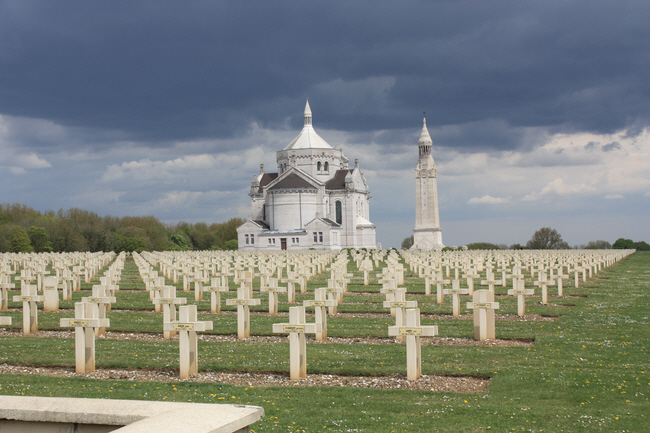
Notre Dame de Lorette is the world's largest French military cemetery.It is the name of a ridge, basilica, and French national cemetery northwest of Arras at the village of Ablain-Saint-Nazaire. The high point of the hump-backed ridge stands 165 metres high and – with Vimy Ridge – utterly dominates the otherwise flat Douai plain and the town of Arras.
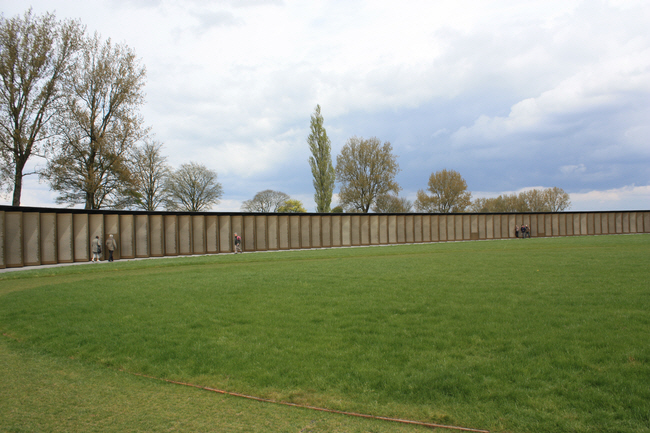
The recently inaugurated Ring of Remembrance commemorating almost 600,000 soldiers from all sides killed in Northern France.
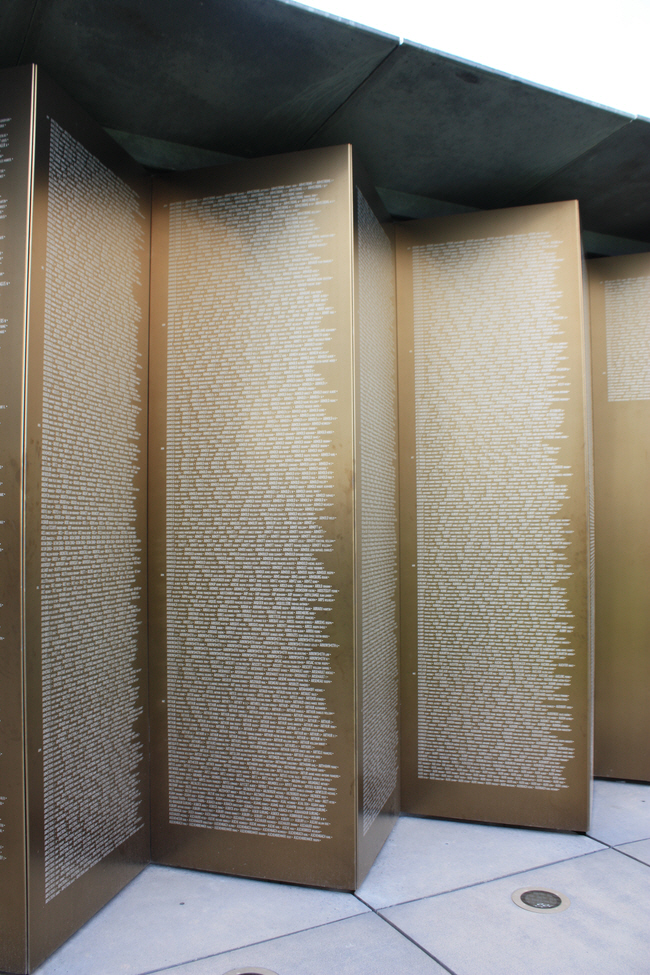
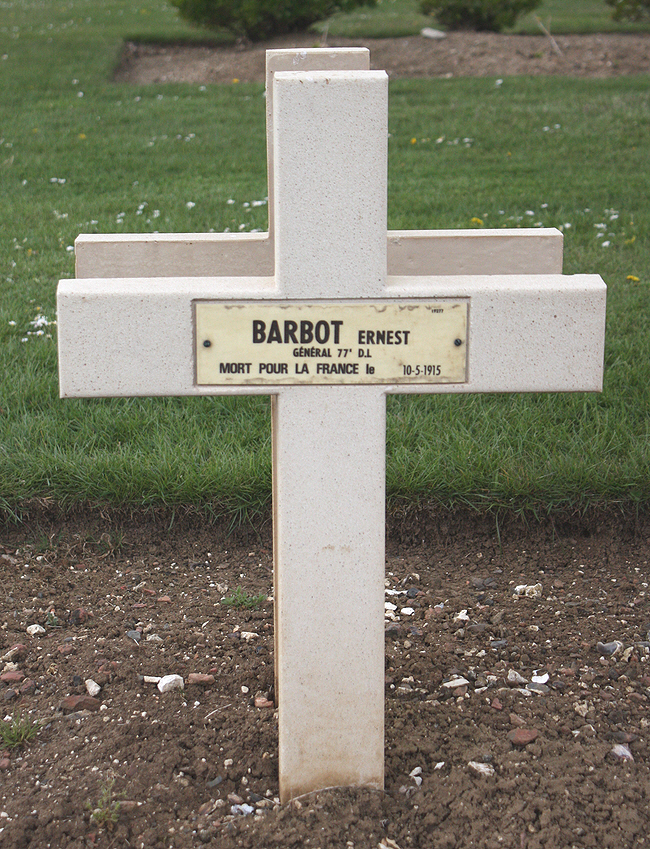
A typical French war grave.
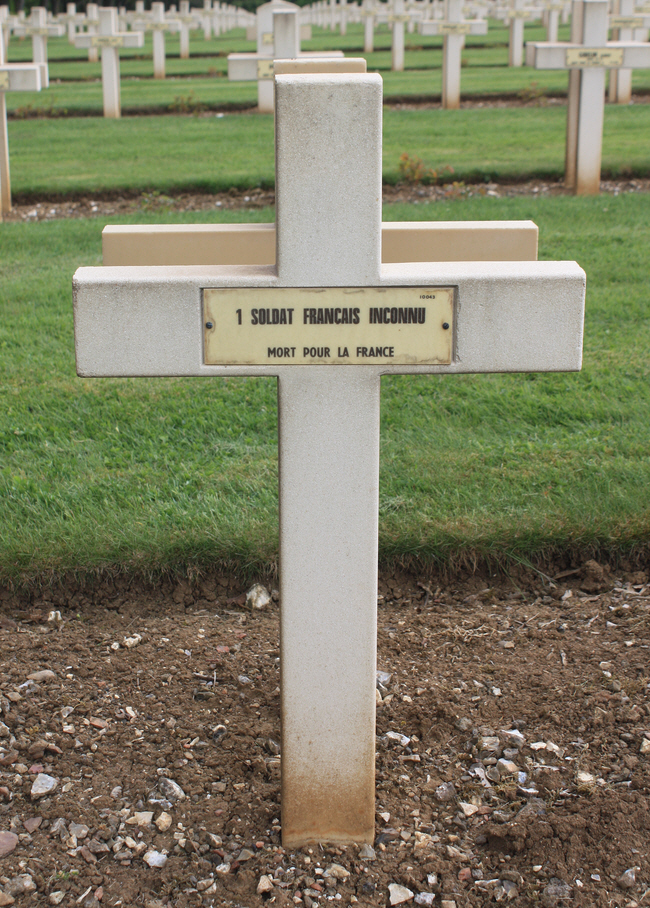
The grave of an unknown French soldier.
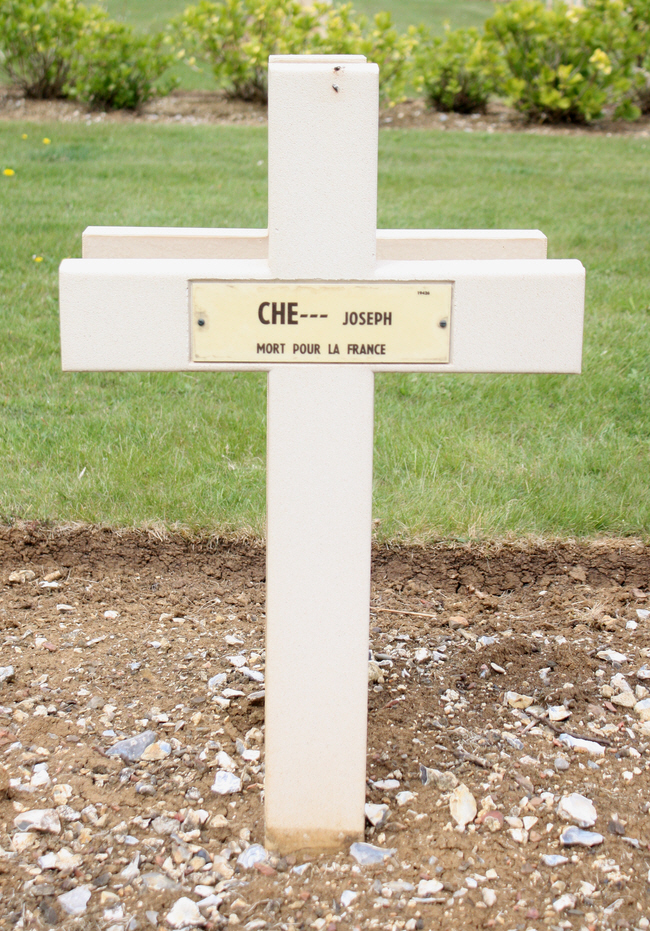
This soldier's name was incompletely known.
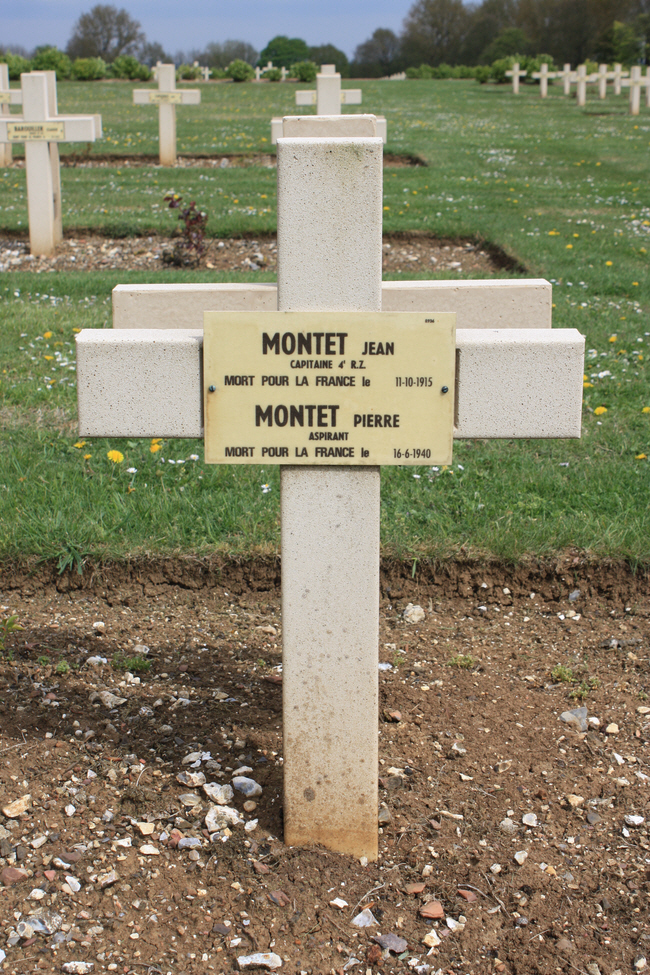
The grave of a father and son who died in different wars.

The Islamic section of the cemetery.
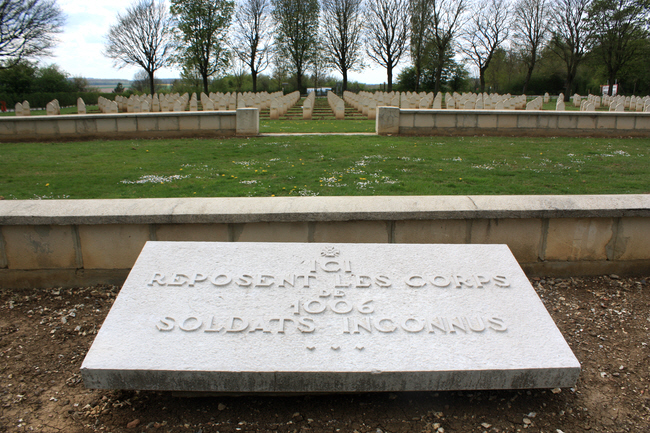
One of a number of mass graves of unknown soldiers which together hold almost 20,000 bodies.
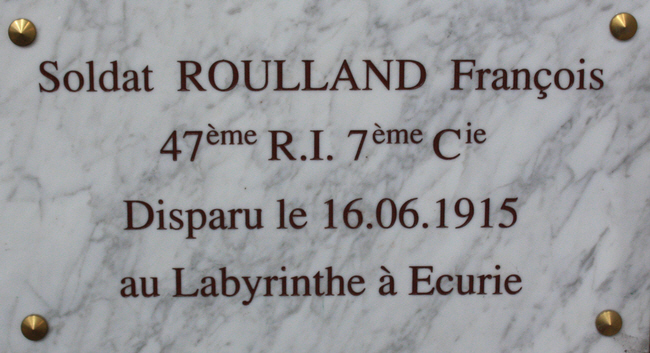
This plaque in the church records a soldier who disappeared in the "Labyrinth", a network covering 2 square miles of trenches, tunnels and dug-outs across the Arras–Lens road north of Ecurie and Roclincourt .
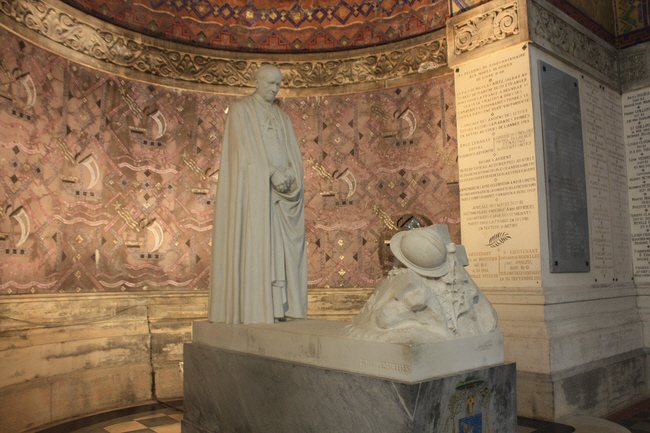
An ornate monument inside the church.
Vimy Ridge
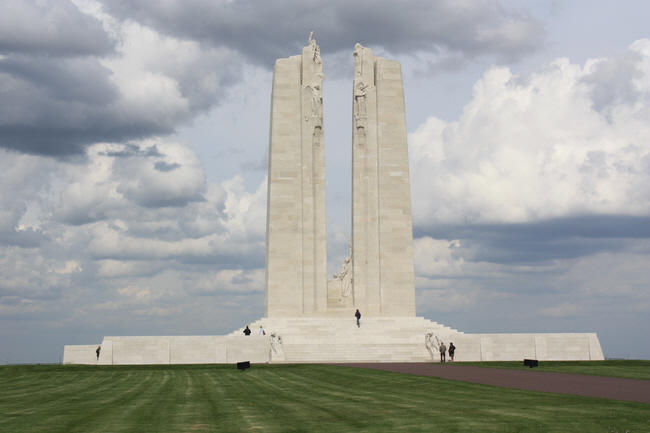
The Vimy Memorial overlooks the Douai Plain from the highest point of Vimy Ridge, about eight kilometres northeast of Arras. On the opening day of the Battle of Arras, 9 April 1917, the four divisions of the Canadian Corps, fighting side by side for the first time, scored a huge tactical victory in the capture of the 60 metre high Vimy Ridge. After the war, the highest point of the ridge was chosen as the site of the great memorial to all Canadians who served their country in battle during the First World War, and particularly to the 60,000 who gave their lives in France. It also bears the names of 11,000 Canadian servicemen who died in France - many of them in the fight for Vimy Ridge - who have no known grave.
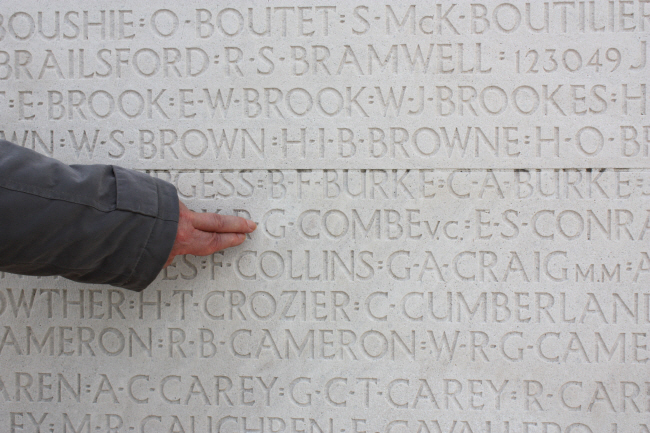
Robert Grierson Combe VC (5 August 1880 – 3 May 1917), was a Canadian recipient of the Victoria Cross, the highest and most prestigious award for gallantry in the face of the enemy that can be awarded to British and Commonwealth forces. Combe is also considered Scottish since he was born in Aberdeen, Scotland.
On 3 May 1917, south of Acheville, France, Lieutenant Combe steadied his company under intense fire and leading them through the enemy barrage reached the objective with only five men. He proceeded to bomb the enemy, inflicting heavy casualties and then, collecting small groups of men, succeeded in capturing the objective, together with 80 prisoners. He repeatedly charged the enemy, driving them before him, but while personally leading his bombers he was killed by a sniper.
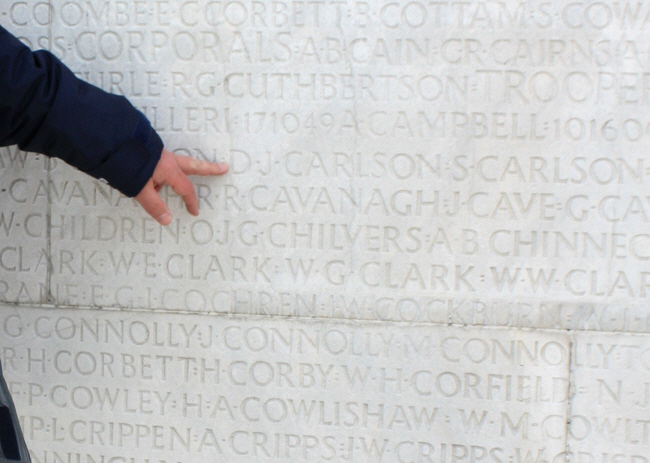
Our guide Vic Piuk was proud to find the remains of David John Carlson in 1999 - he is now in a marked grave elsewhere.
30th April 2015
Connaught Cemetery
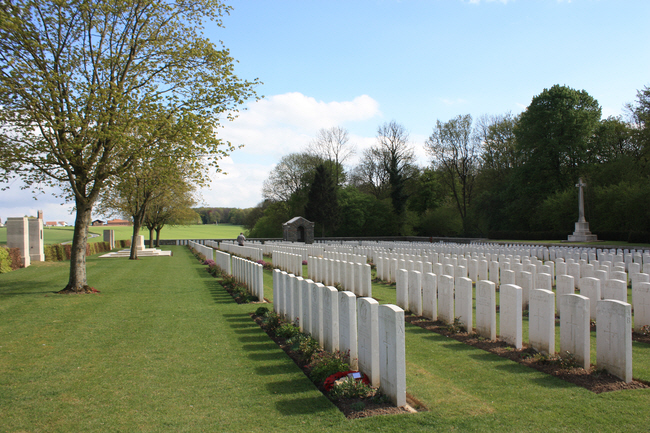
The Cemetery is on the edge of Thiepval Wood near the Ulster Tower, about one kilometre north-west of Thiepval. The vast majority of the burials are those of officers and men who died in the summer and autumn of 1916. There are now 1,268 Commonwealth servicemen of the First World War buried or commemorated in the cemetery. Half of the burials are unidentified, but special memorials commemorate two casualties believed to be buried among them and five buried in Divion Wood Cemetery No.2, whose graves could not be found on concentration.
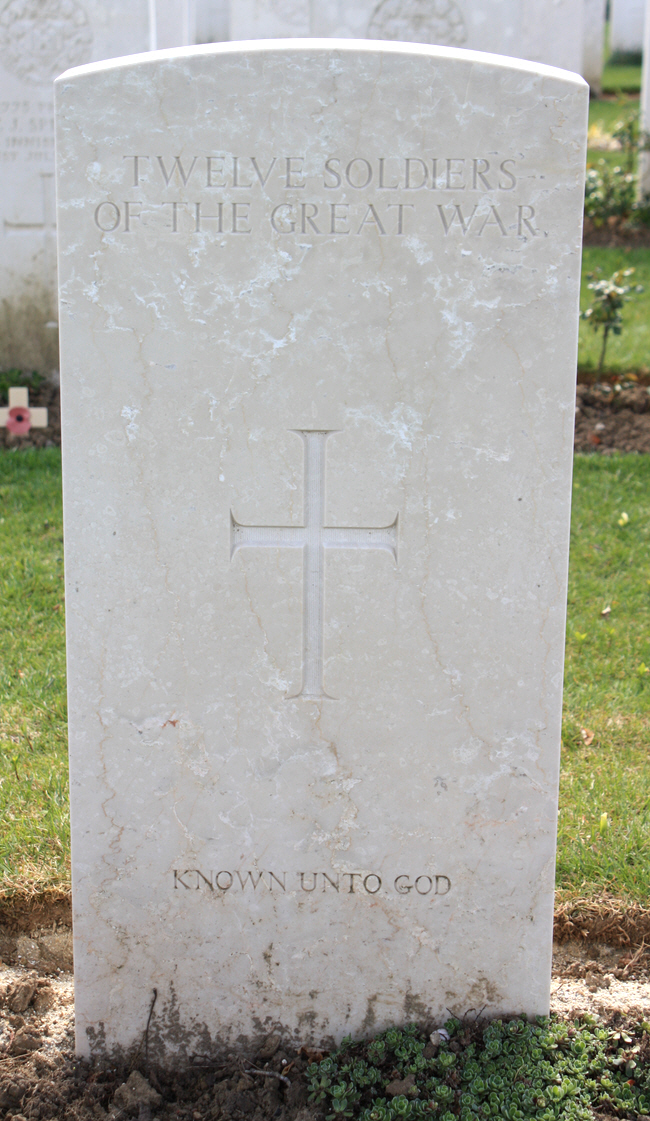
A grave of 12 unknown soldiers.
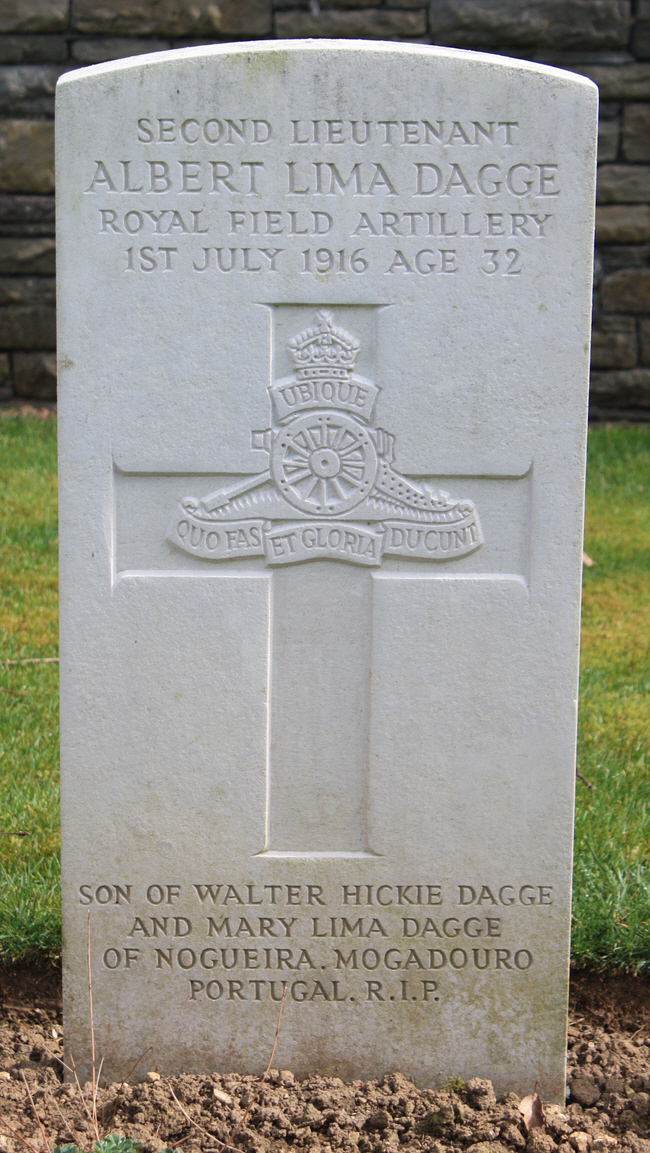
This soldier appears to be Portuguese.
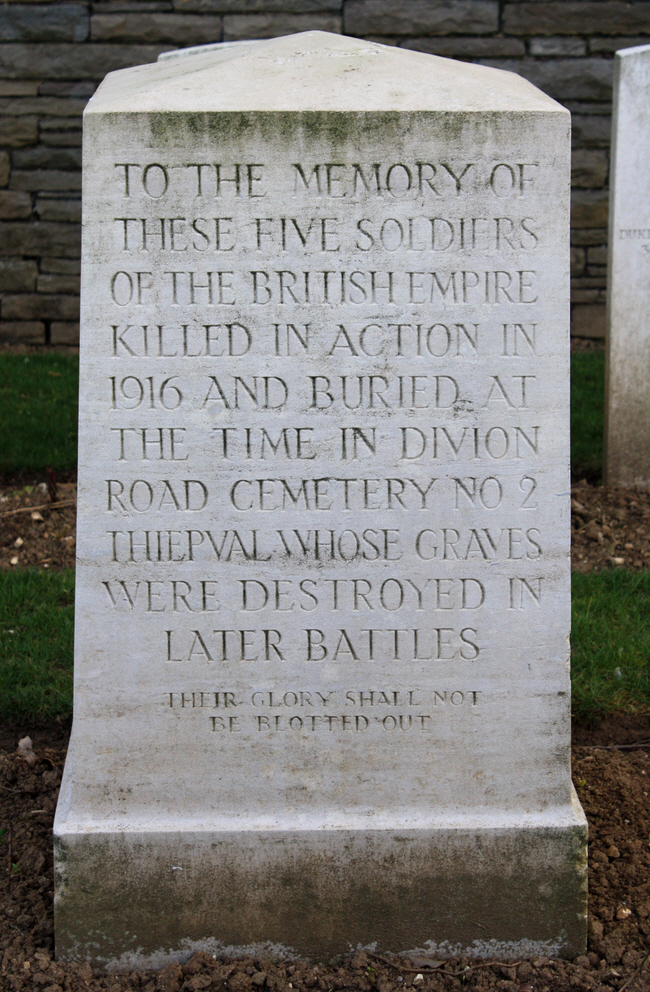
A memorial to five soldiers whose earlier graves had been destroyed.
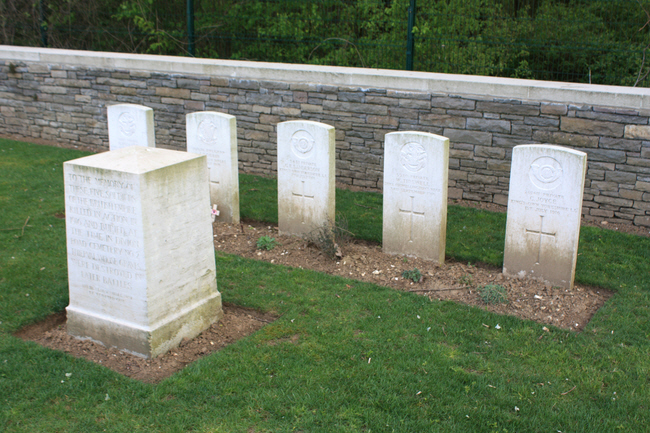
Delville Wood Cemetery
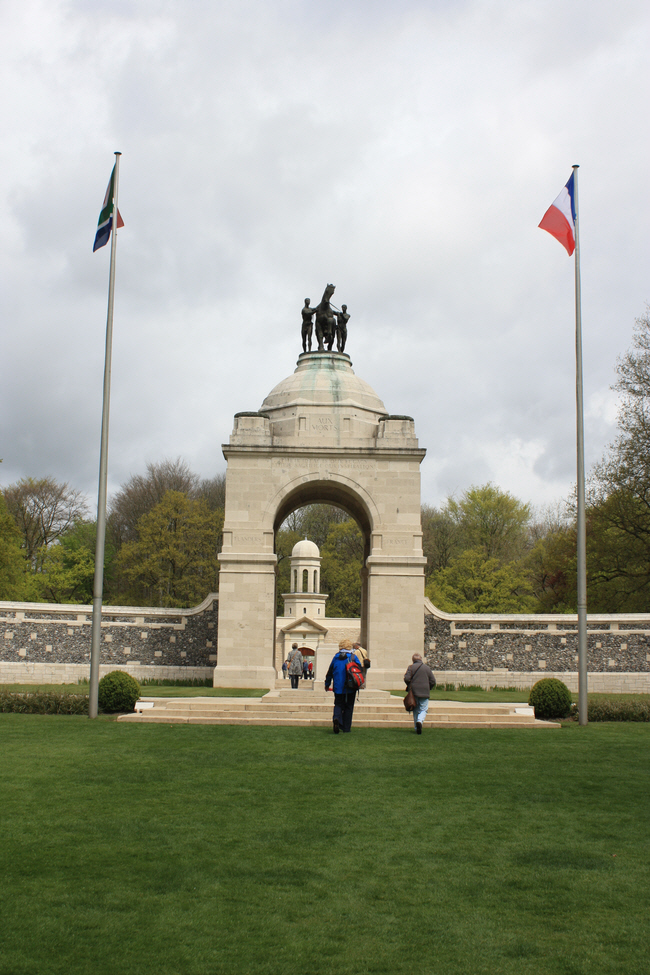
There are now 5,523 burials and commemorations of the First World War in this cemetery. 3,593 of the burials are unidentified but there are special memorials to 27 casualties known or believed to be buried among them. Other special memorials record the names of three soldiers buried in Courcelette Communal Cemetery German Extension, whose graves were destroyed by shell fire.
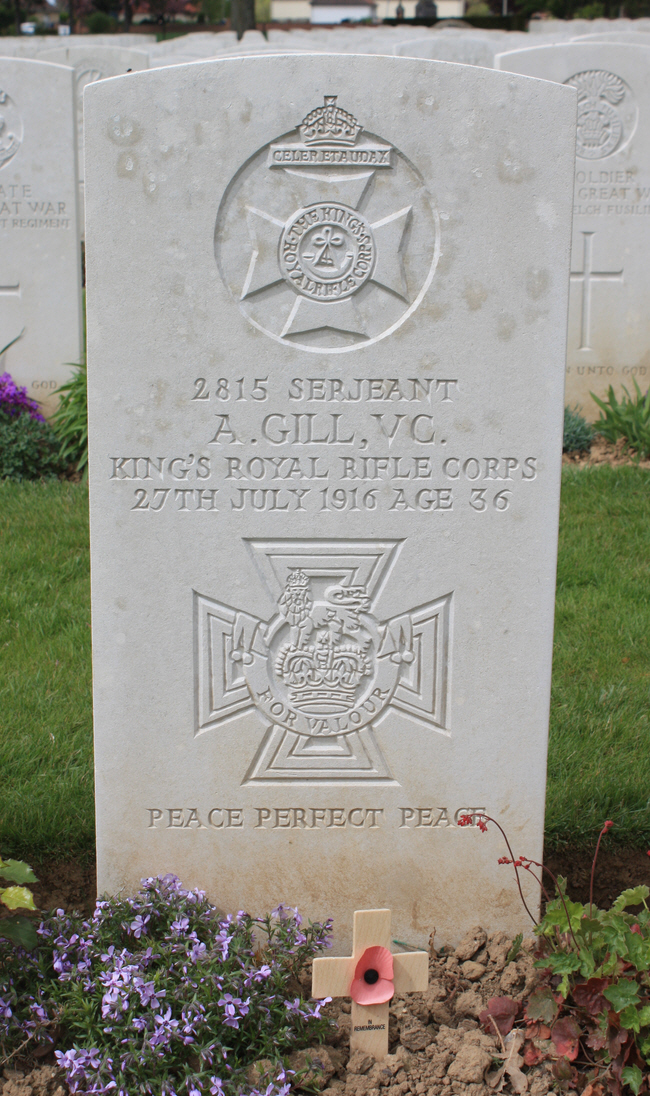
Sergeant Albert Gill VC (8 September 1879 – 27 July 1916)[1] was an English recipient of the Victoria Cross, the highest and most prestigious award for gallantry in the face of the enemy that can be awarded to British and Commonwealth forces. He was 36 years old, and a serjeant in the 1st Battalion, The King's Royal Rifle Corps, British Army during the First World War when the following deed took place for which he was awarded the VC.
On 27 July 1916 at Battle of Delville Wood in France, the enemy made a very strong counterattack on the right flank of the battalion and rushed the bombing post after killing all the company bombers. Sergeant Gill rallied the remnants of his platoon, none of whom were skilled bombers, and reorganised his defences. Soon afterwards the enemy nearly surrounded his men and started sniping at about 20 yards range. Although it was almost certain death, Sergeant Gill stood boldly up in order to direct the fire of his men. He was killed almost at once, but his gallant action held up the enemy advance
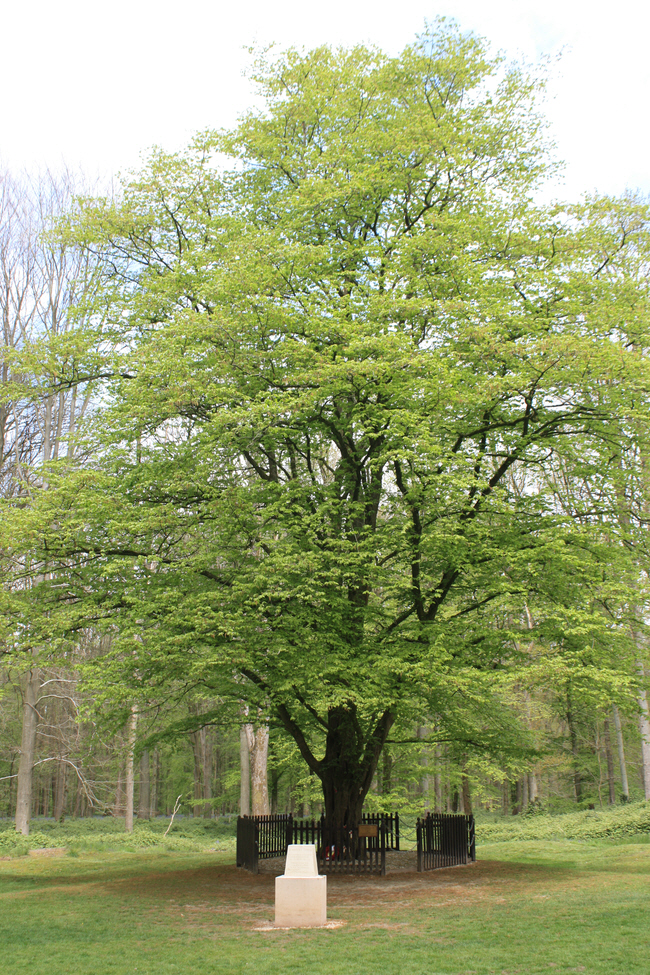
The Hornbeam is the only surviving original tree of the battles of 1916.
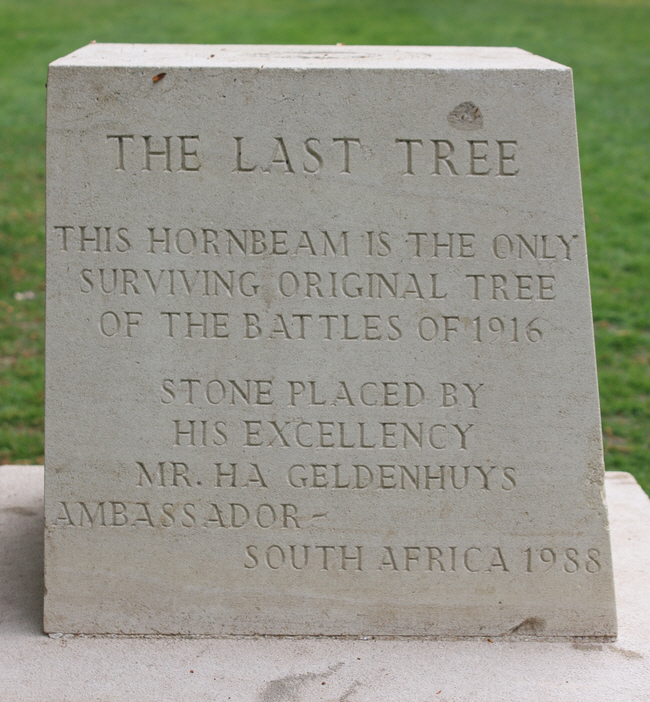
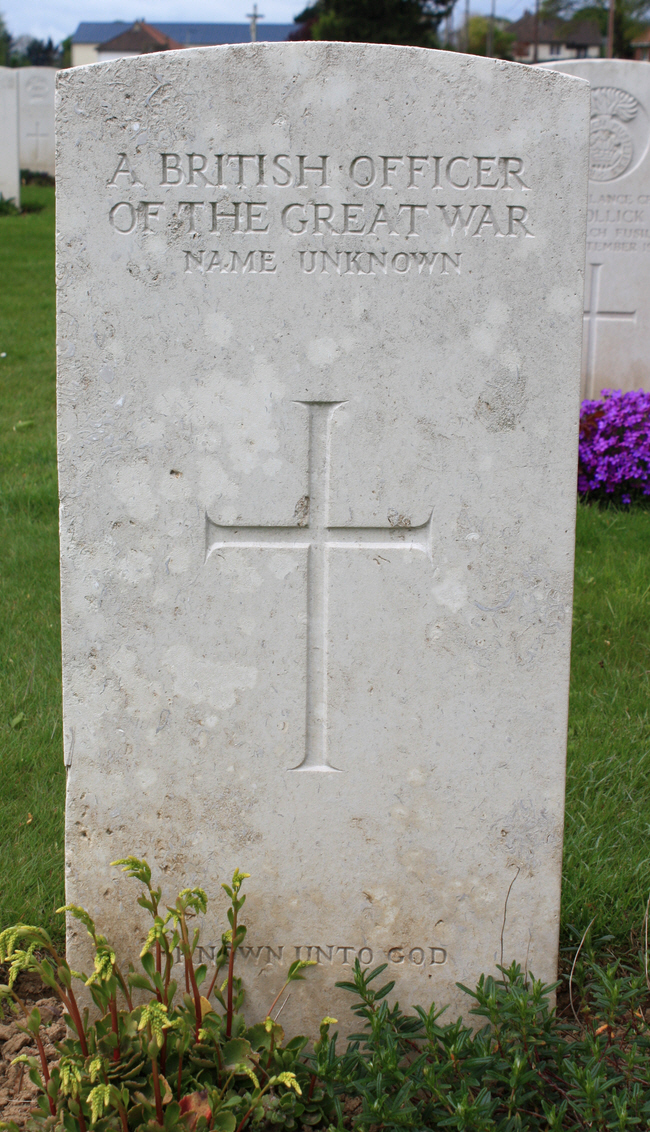
An unknown British Officer.
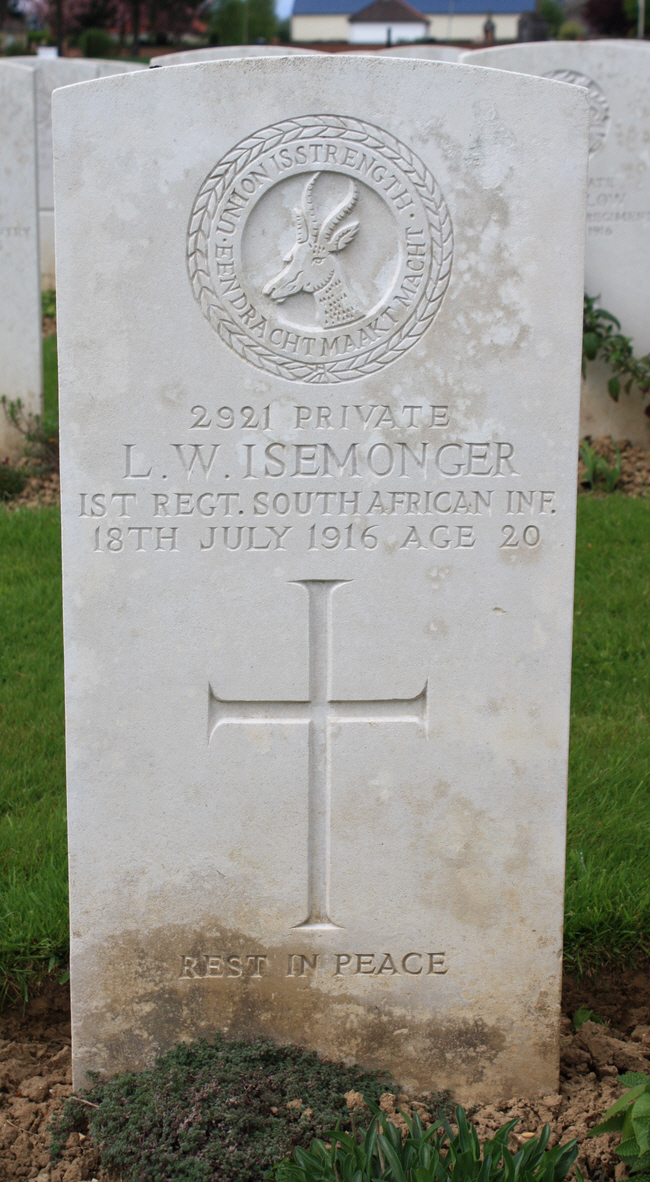
A Private - L W Isemonger - of the 1st Regiment South African Infantry.
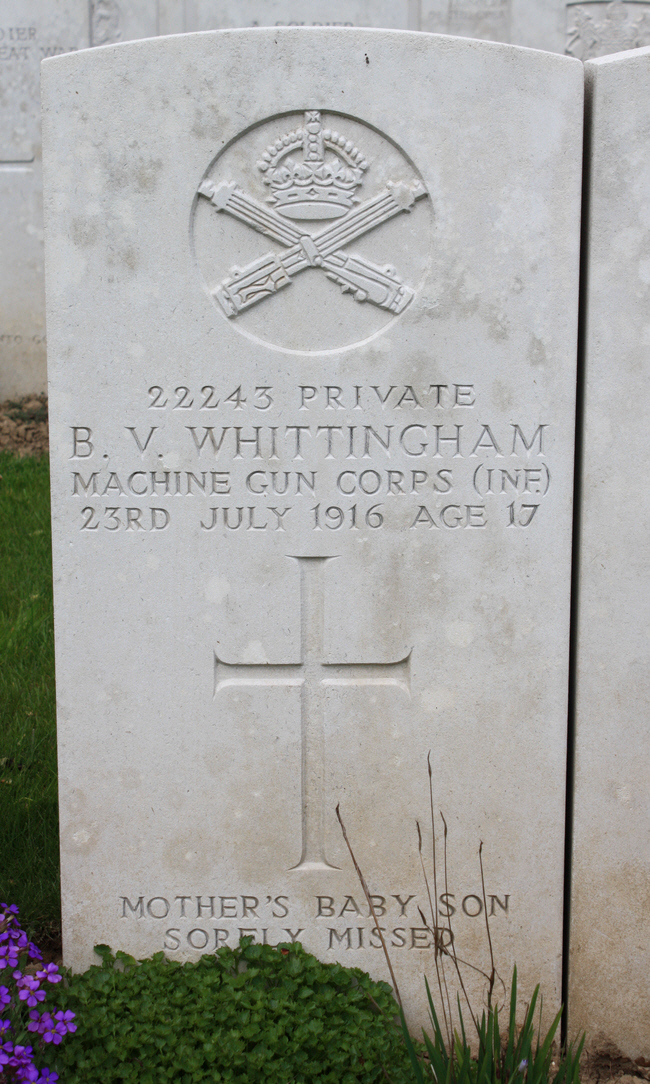
"MOTHER'S BABY SON
SORELY MISSED"
Hawthorn Ridge Cemetery Number 2
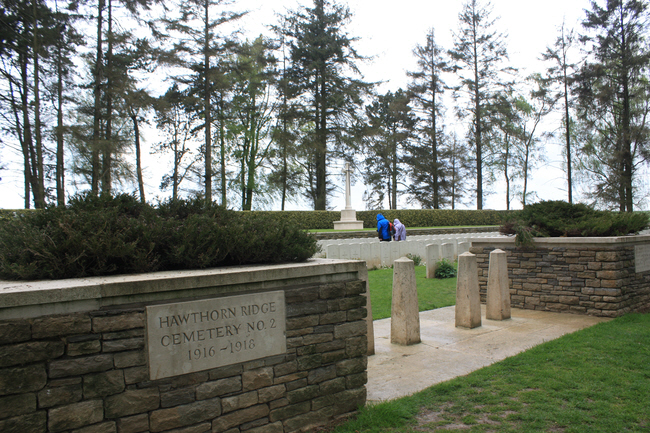
Hawthorn Ridge Cemetery No. 2 is a Commonwealth War Graves Commission burial ground for the dead of World War I situated on the grounds of the Beaumont-Hamel Newfoundland Memorial near the French town of Beaumont-Hamel.
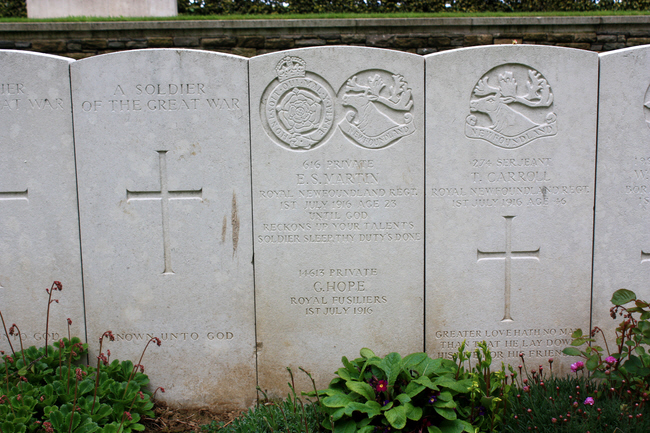
A selection of gravestones placed close together.
Hunters Cemetery
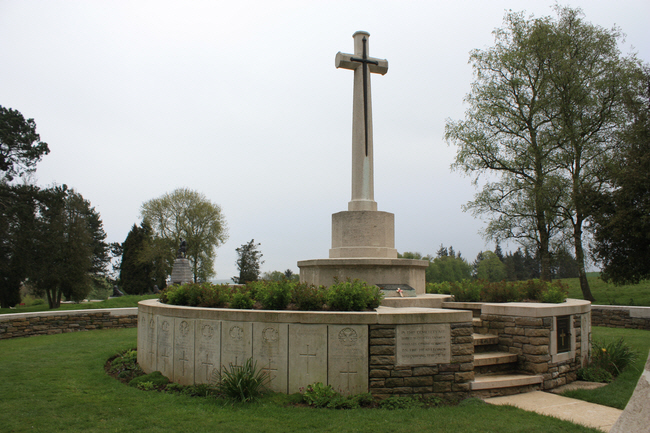
Hunter's Cemetery (the origin of the name may refer to a Chaplain attached to the Black Watch, the Rev. Hunter) is, in fact, a great shell-hole, in which soldiers of the 51st Division, who fell in the capture of Beaumont-Hamel, were buried after the battle. There are now over 40, 1914-18 war casualties commemorated in this site.
Thiepval Memorial
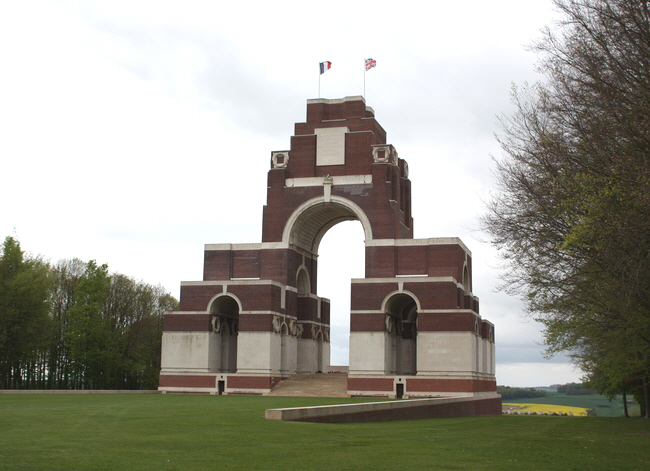
The Thiepval Memorial, the Memorial to the Missing of the Somme, bears the names of more than 72,000 officers and men of the United Kingdom and South African forces who died in the Somme sector before 20 March 1918 and have no known grave. Over 90% of those commemorated died between July and November 1916. The memorial also serves as an Anglo-French Battle Memorial in recognition of the joint nature of the 1916 offensive and a small cemetery containing equal numbers of Commonwealth and French graves lies at the foot of the memorial.
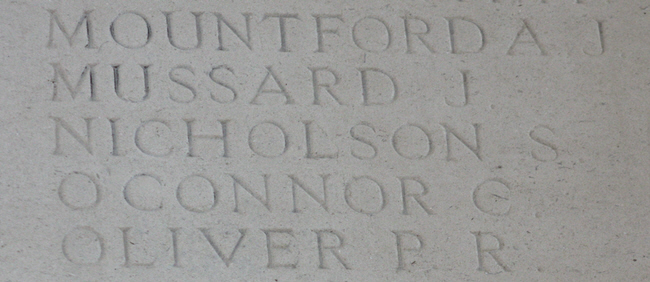
Sidney Nicholson was my Great Uncle. He served in the 21st Battalion King's Royal Rifle Corps. He was killed in action on October 7th 1916 aged 26.
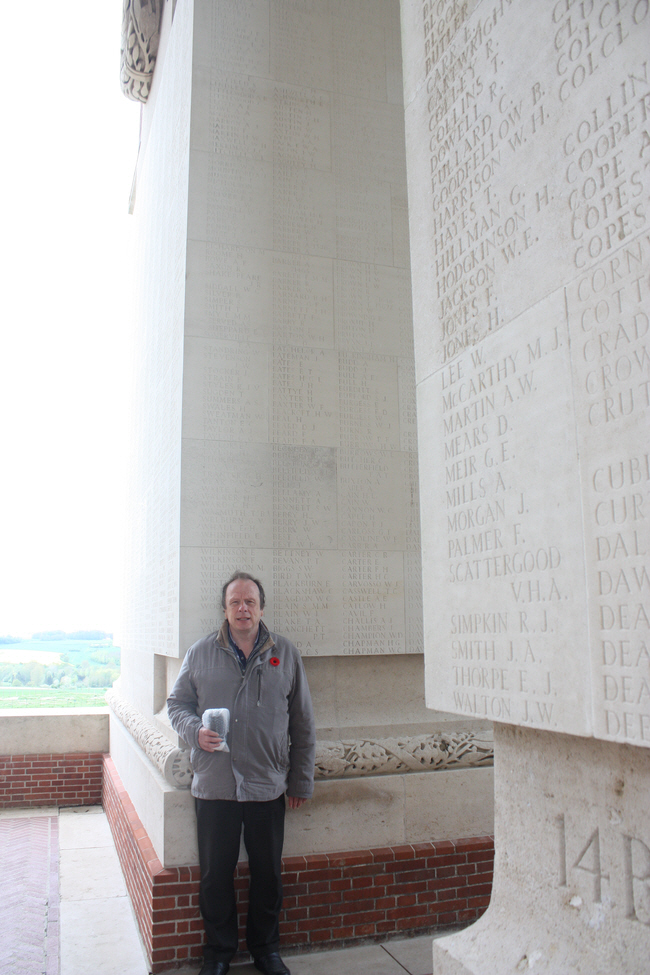
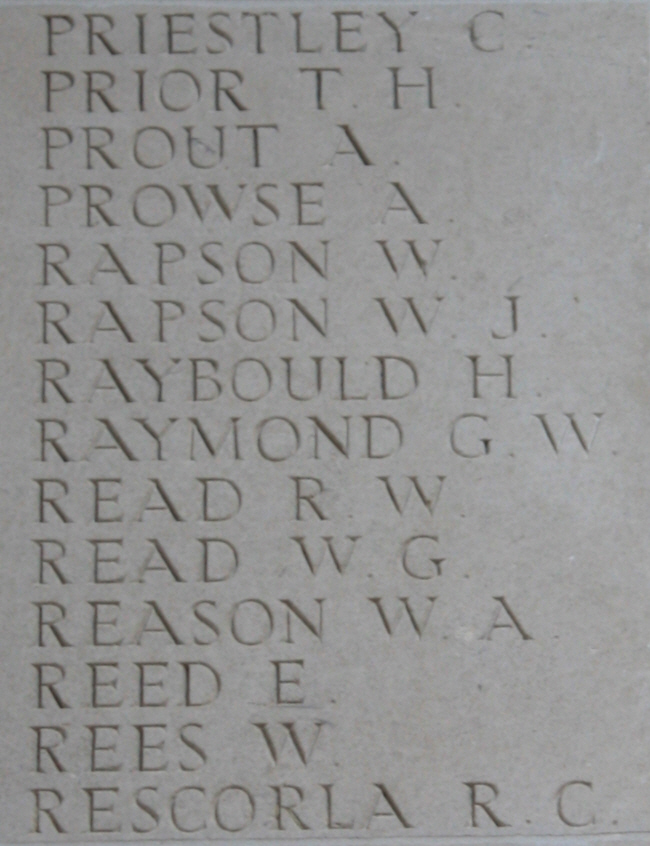
Harry Raybould 17964, Duke of Cornwall's Light Infantry, died 16.08.1916 aged 22.

Eric Norman Frankland Bell VC (28 August 1895 – 1 July 1916) was born in Enniskillen, County Fermanagh, Ireland and was an Irish recipient of the Victoria Cross, the highest and most prestigious award for gallantry in the face of the enemy that can be awarded to British and Commonwealth forces.
For most conspicuous bravery. He was in command of a Trench Mortar Battery, and advanced with the Infantry in the attack. When our front line was hung up by enfilading machine gun fire Captain Bell crept forward and shot the machine gunner. Later, on no less than three occasions, when our bombing parties, which were clearing the enemy's trenches, were unable to advance, he went forward alone and threw Trench Mortar bombs among the enemy. When he had no more bombs available he stood on the parapet, under intense fire, and used a rifle with great coolness and effect on the enemy advancing to counter-attack. Finally he was killed rallying and reorganising infantry parties which had lost their officers. All this was outside the scope of his normal duties with his battery. He gave his life in his supreme devotion to duty.
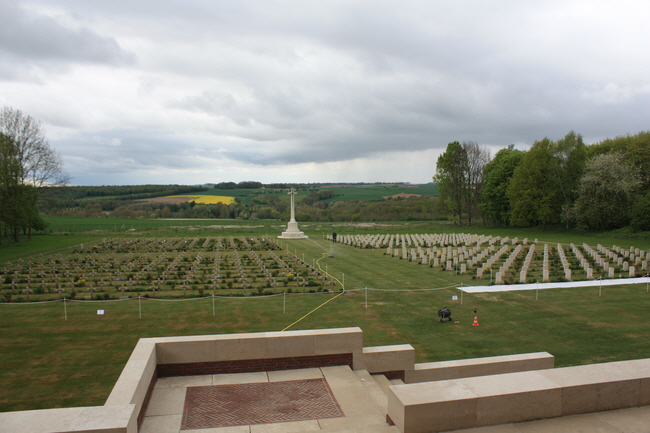
This is the small cemetery situated behind the main memorial.
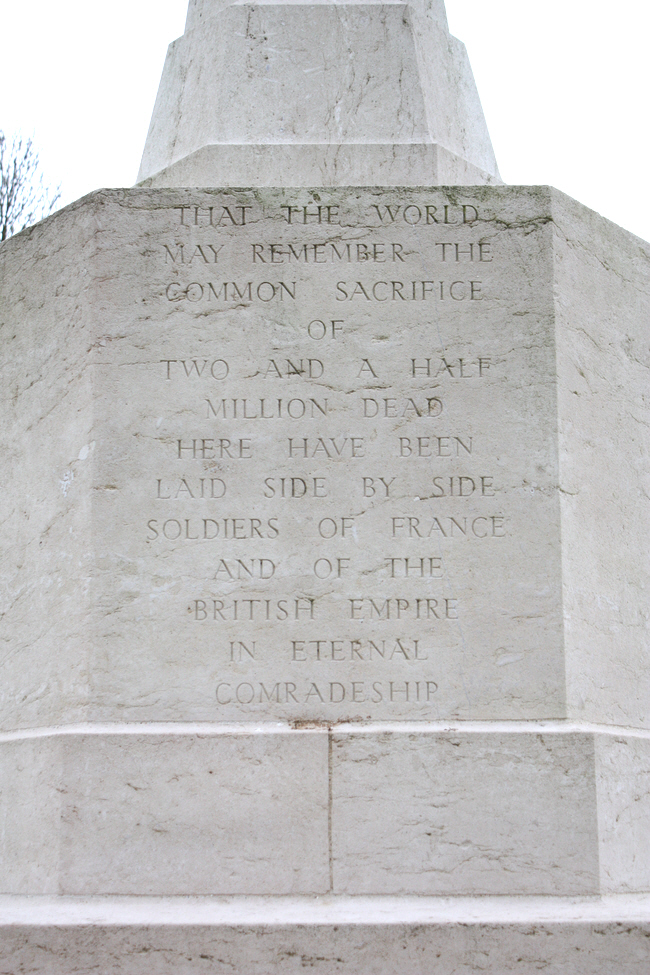
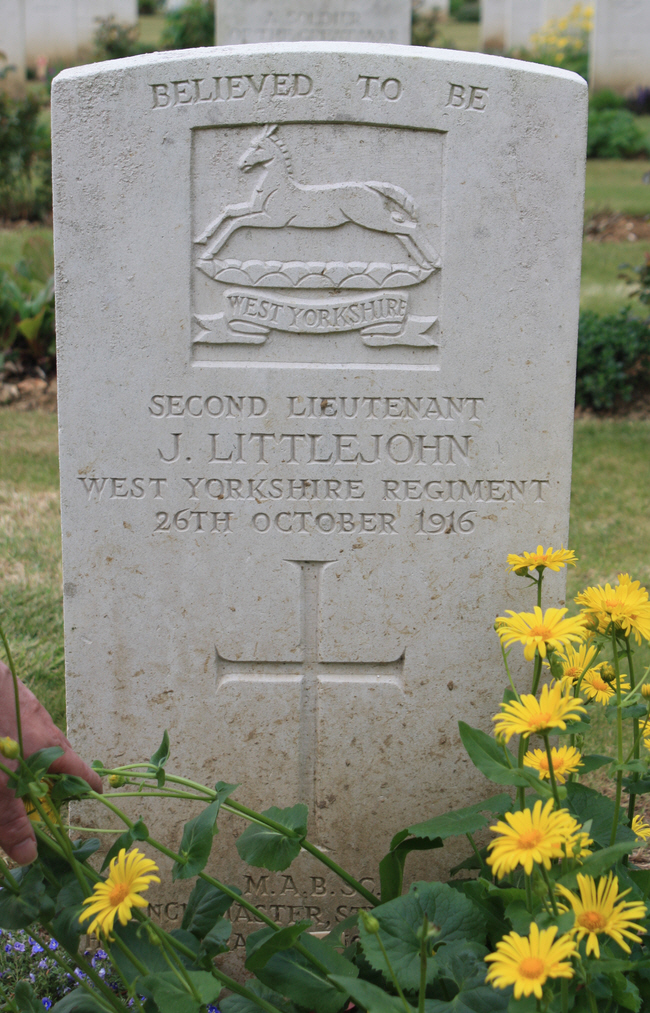
This grave is believed to be that of J Littlejohn.
Y Ravine Cemetery
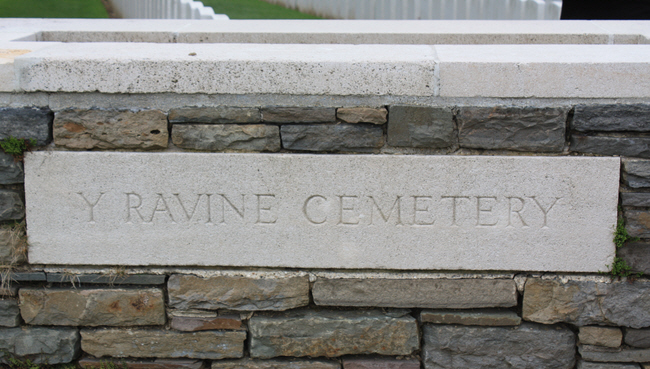
The cemetery was made by the V Corps in the spring of 1917, when these battlefields were cleared. It was called originally "Y" Ravine Cemetery No.1. No.2 cemetery was concentrated after the Armistice into Ancre British Cemetery, Beaumont-Hamel. There are now over 400, 1914-18 war casualties commemorated in this site. Of these, over a third are unidentified and special memorials are erected to 53 soldiers (or sailors or Marines) from the United Kingdom and eight from Newfoundland, known or believed to be buried among them.
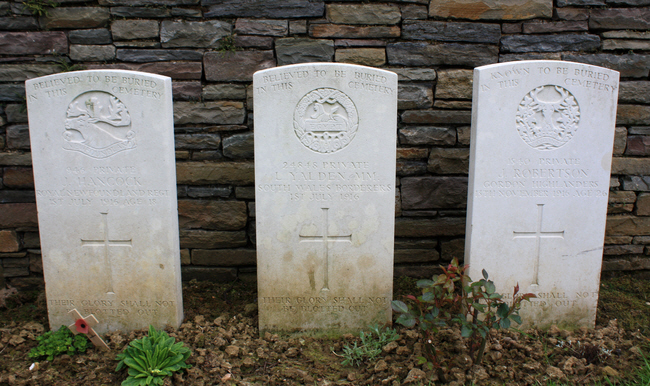
Two soldiers "believed" and one "known" to be buried in this cemetery.
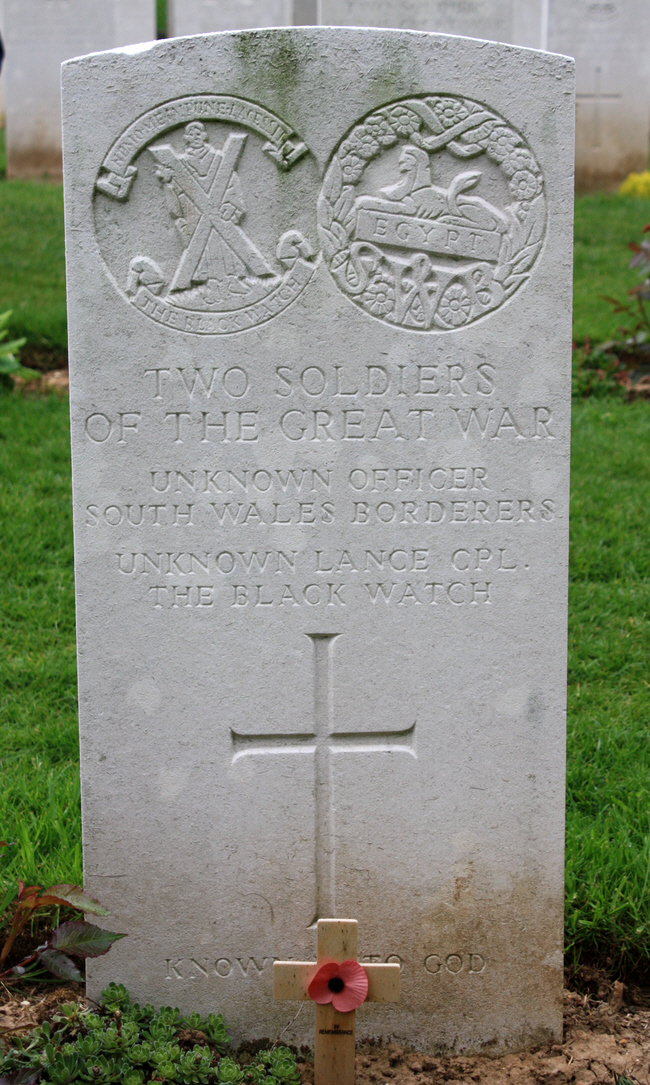
Two unknown officers of different regiments buried in the same grave.
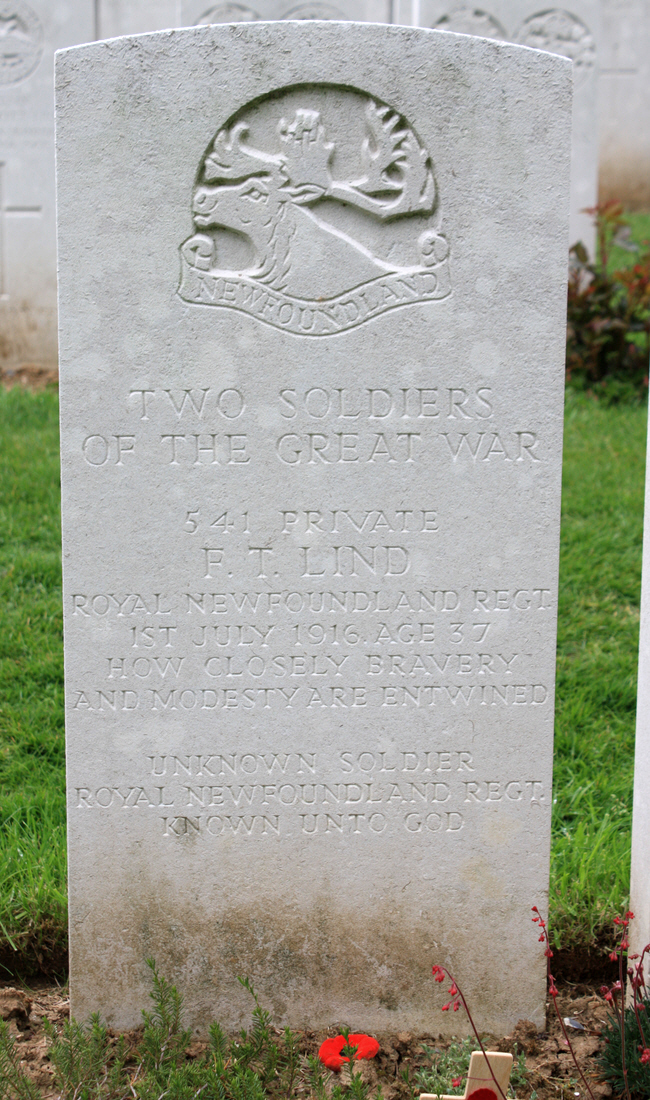
One named and one unknown soldier sharing a grave.
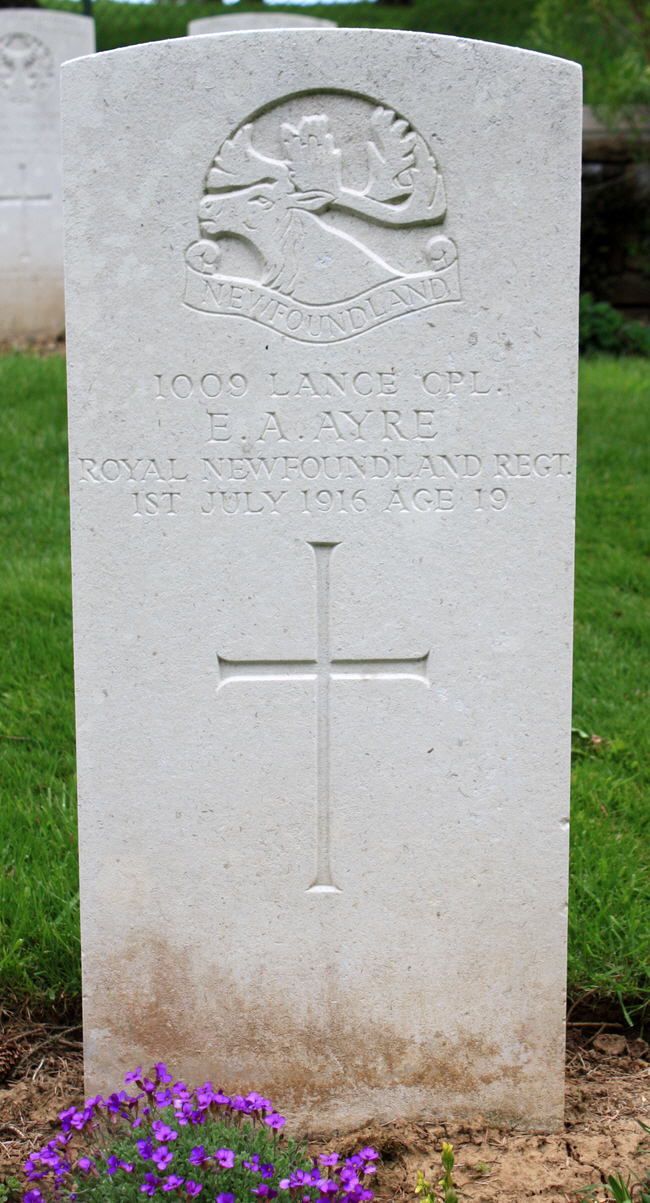
Another soldier from the Newfoundland Regiment.
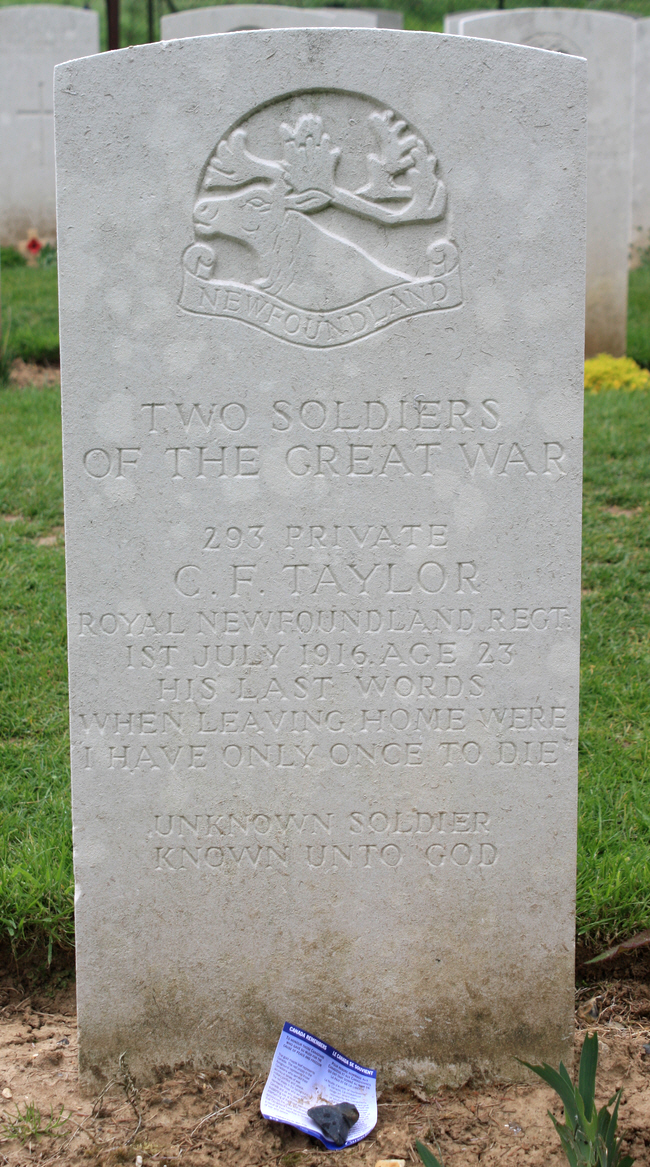
The last words of Private Taylor, on leaving home, were "I have only once to die". He shares his grave with an unknown soldier.
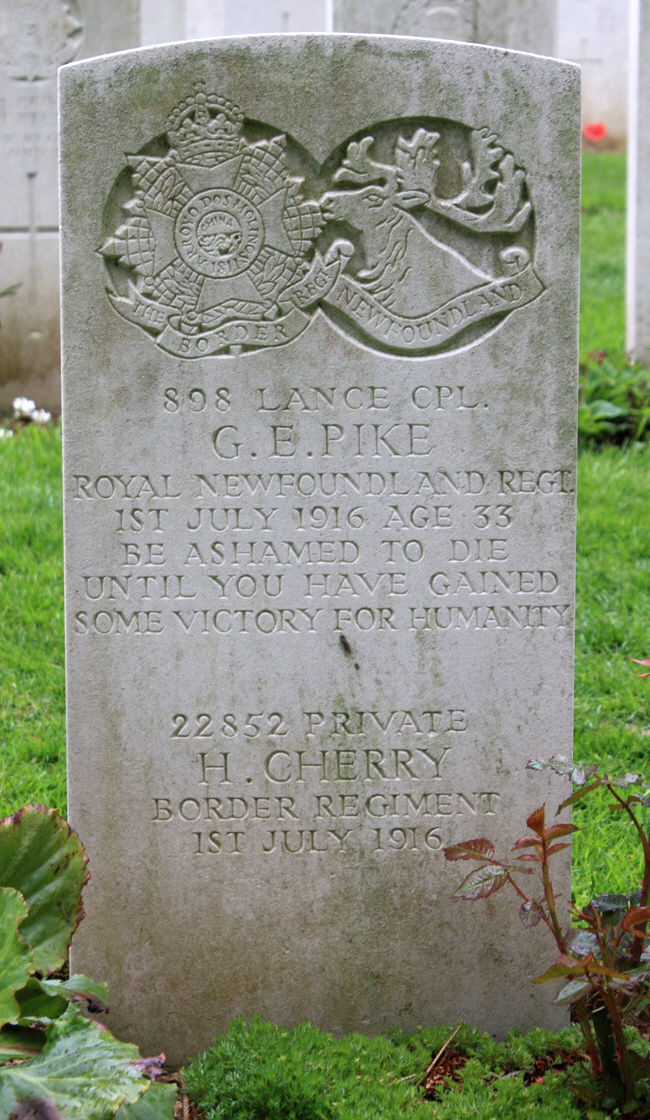
Two soldiers, of different nationalities, sharing a grave.
Ulster Tower
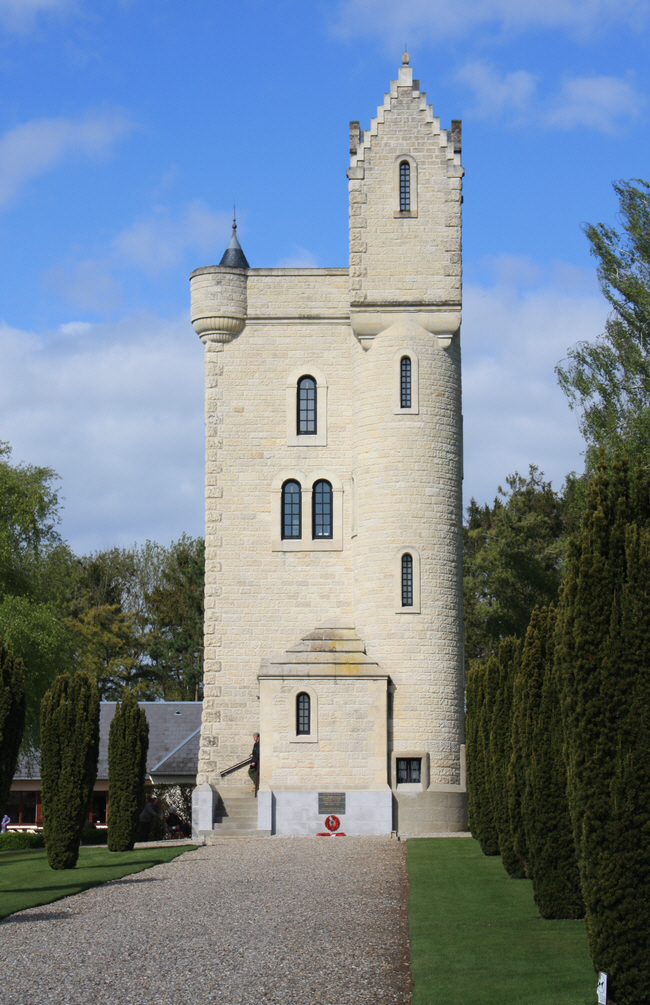
The Ulster Memorial Tower is a Somme battlefield memorial to the men of the 36th (Ulster) Division. It commemorates the heavy losses suffered by 36th Division on 1st July 1916, the first day of the Battle of the Somme. Helen's Tower in Clandboye near Belfast was selected as the most appropriate building to replicate for the monument on the 1916 Somme battlefields.
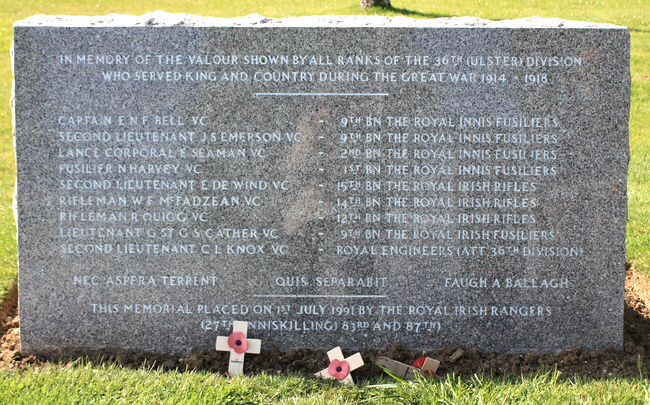
A memorial stone to 9 winners of the Victoria Cross all from the 36th (Ulster) Division.
Martin Nicholson - Daventry, United Kingdom.
This page was last updated on May 8th 2015.